- Français
- Español
- Português
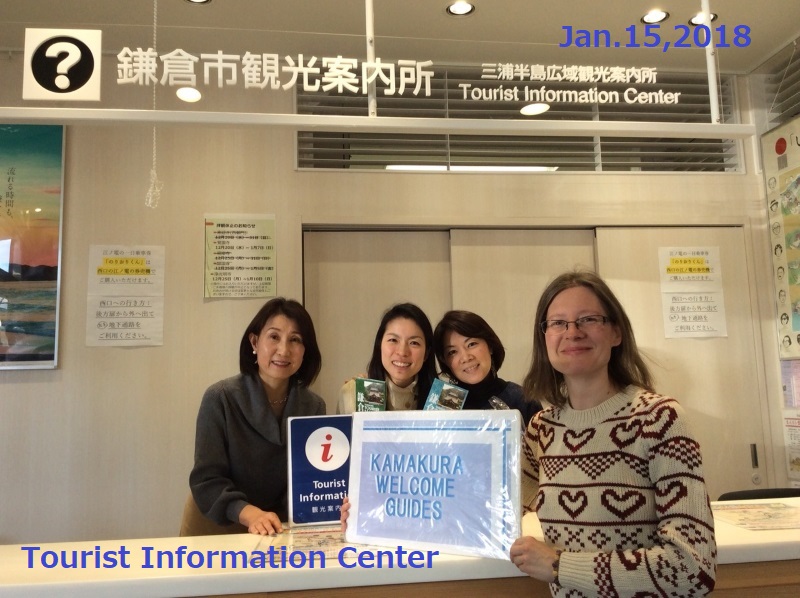

Kamakura Welcome Guide Association

Kamakura Welcome Guide Association (KWGA) is a group of volunteer tour guides for international tourists and is officially recognized by Kamakura City Tourist Association. All the tour guides are deeply attached to Kamakura, and welcome all international tourists by showing warm-hearted hospitality.KWGA had suspended all the guided tours from April 2020 in the COVID-19 pandemic situation, but reopened the reservation-based guided tour from January 10, 2023. The Friday-scheduled guided tour will continue to be unavailable.
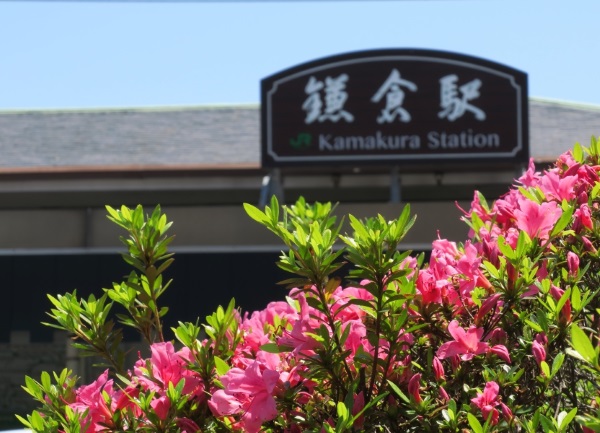
Tourist Attractions in Kamakura
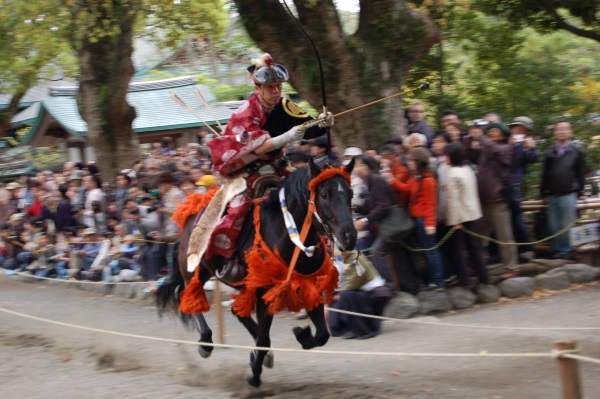
KAMAKURA, the Ancient City of Samurai The great samurai leader, Minamoto Yoritomo established the samurai government for the first time in Japan's history and placed his headquarters in Kamakura. ・・・ READ MORE
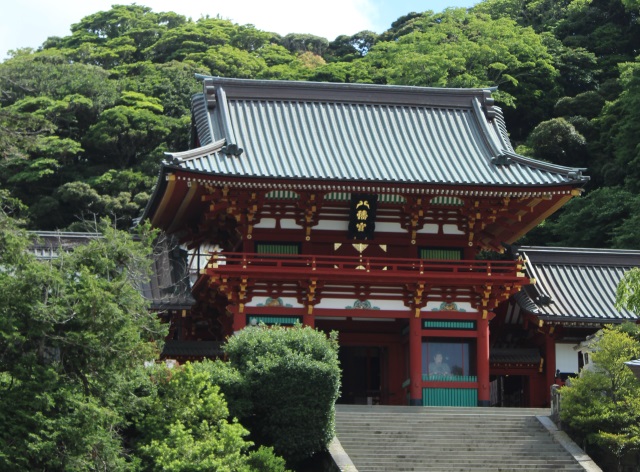
Tsurugaoka Hachimangu In Kamakura this is the major shinto shrine and is a very popular tourist destination. This shrine was founded in 1180 by then shogun Minamoto Yoritomo, who transferred the shrine from Yui-Wakamiya to the present site.・・・ READ MORE
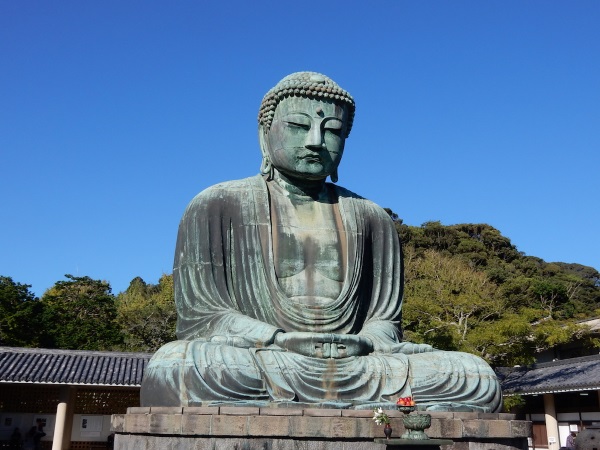
Kotokuin (Great Buddha) This is a seated statue of Amida Nyorai (designated as a national treasure), one of the biggest Buddha statues in Japan. It is said that the bronze casting started in 1252 and took more than ten years to complete.・・・ READ MORE

Guided Tour
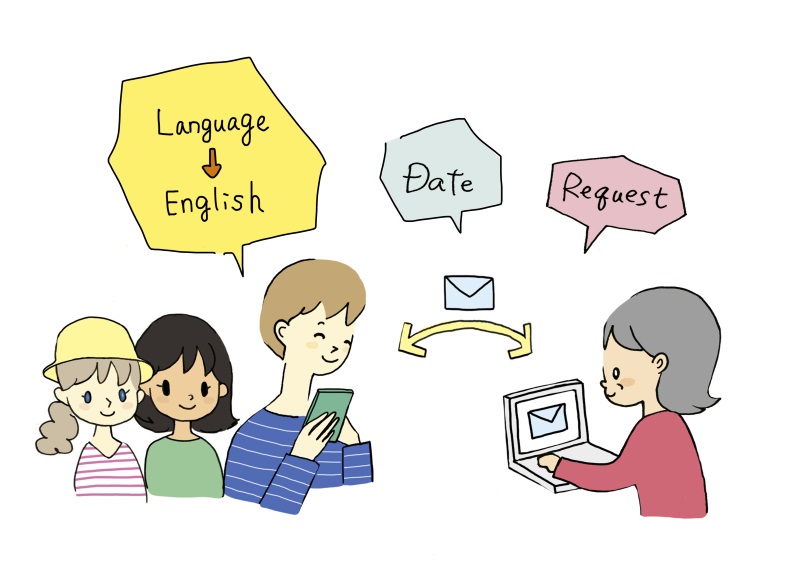
You need to send us an application with specific requests on the tour. For tour route selection, we offer a Model Tour Course and a Free Tour Course. ・Detailed tour route information ・Application procedures and Terms of service ・Making an application
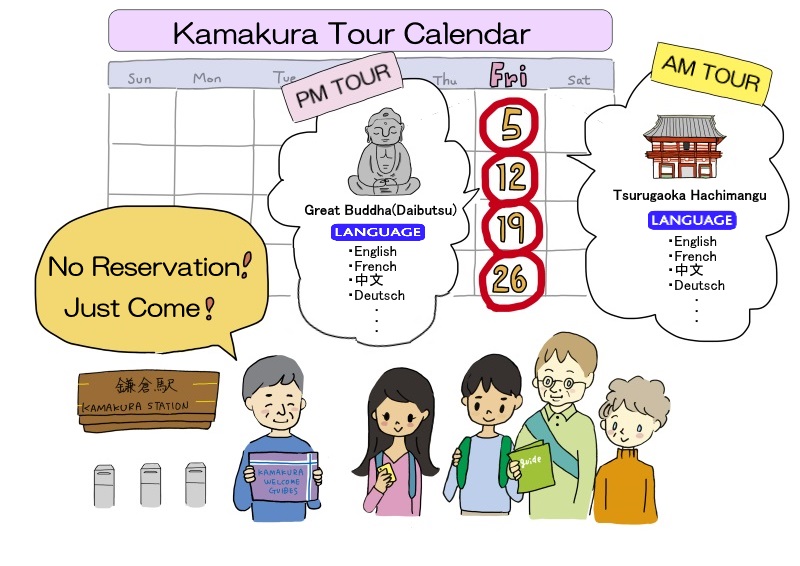
Friday-Scheduled Guided Tour is ・・・ You just come to the specified meeting point on Fridays. No application is necessary. ・Detailed information ・ Our Facebook page provides dates and languages available on Fridays.
Application for Free Guided Tour
・Click Making An Application button and follow the directions on the screen. ・Friday-scheduled tours require no application. Detailed tour information ・Please apply between 3 months and 2 weeks prior to your desired tour date. If your tour party is more than 15 people, please apply earlier than 3 weeks before the tour date. ・Please note that our guides are available throughout the year, except from Dec.25th to Jan.7th. For your information Kamakura tends to get crowded on weekends and holidays. Please plan your tour schedule with this in mind. ・Application procedures and Terms of guide service ・For route selection, we offer Model Tour Course and Free Tour Course. Detailed tour route information ・Since we are a nonprofit organization, any applications either directly or indirectly from tourist agencies will not be accepted. Making An Application
Location of Kamakura Welcome Guide Association
Onarimachi 1-12, Kamakura, Kanagawa 248-0012 Kamakura City Tourist Association/Kamakura Welcome Guide Association
The nearest station is JR Kamakura Station West Exit
The office is located on the 4th fl. of the Enoden Building.
TEL 0467-23-3050 (in Japan)
TEL 81-467-23-3050 (from overseas)
e-Mail [email protected]
Office Hours: 8:30 to 17:15 (Closed at Year End and New Year)

VISIT KAMAKURA VISIT KAMAKURA is the official visitor guide for Kamakura sightseeing. It is run by Kamakura City Tourist Association. Information is available in English, French, Spanish, Mandarin Chinese and Korean. Learn more
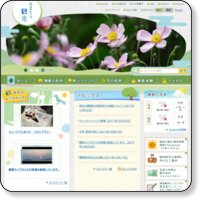
Kamakura Sightseeing This website provides a lot of information about Kamakura sightseeing for international tourists. It is run by the Department of Commerce Tourism, Kamakura City Office. Information is available in Japanese, English, Spanish, French, Mandarin (簡体字/繁体字) and Korean. Learn more
In order to view this website correctly, you will need to have JavaScript enabled in your browser.
Skip to main content.

- ABOUT KAMAKURA
- PLACES TO GO
- RECOMMENDED ROUTES
- SAILING FOR 2020
Select Language
- Español
- Français
Main content starts here.
Kamakura Welcome Guide Association
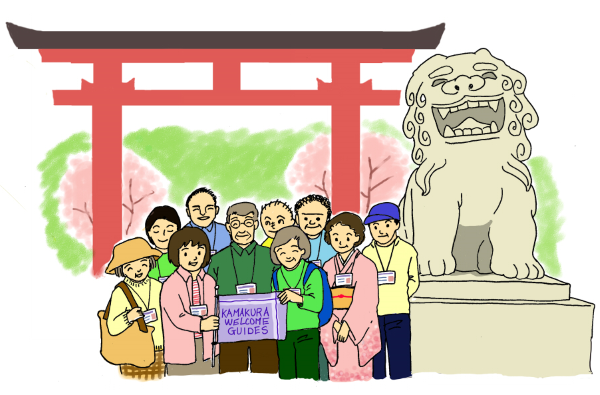
Kamakura Welcome Guide Association (KWGA) is a group of volunteer tour guides for international tourists and is officially recognized by Kamakura City Tourist Association. All the tour guides are deeply attached to Kamakura, and welcome all international tourists by showing warm-hearted hospitality.
Basic information
ホーム > Kamakura Welcome Guide Association
Copyright(C) Kamakura City All Rights Reserved.
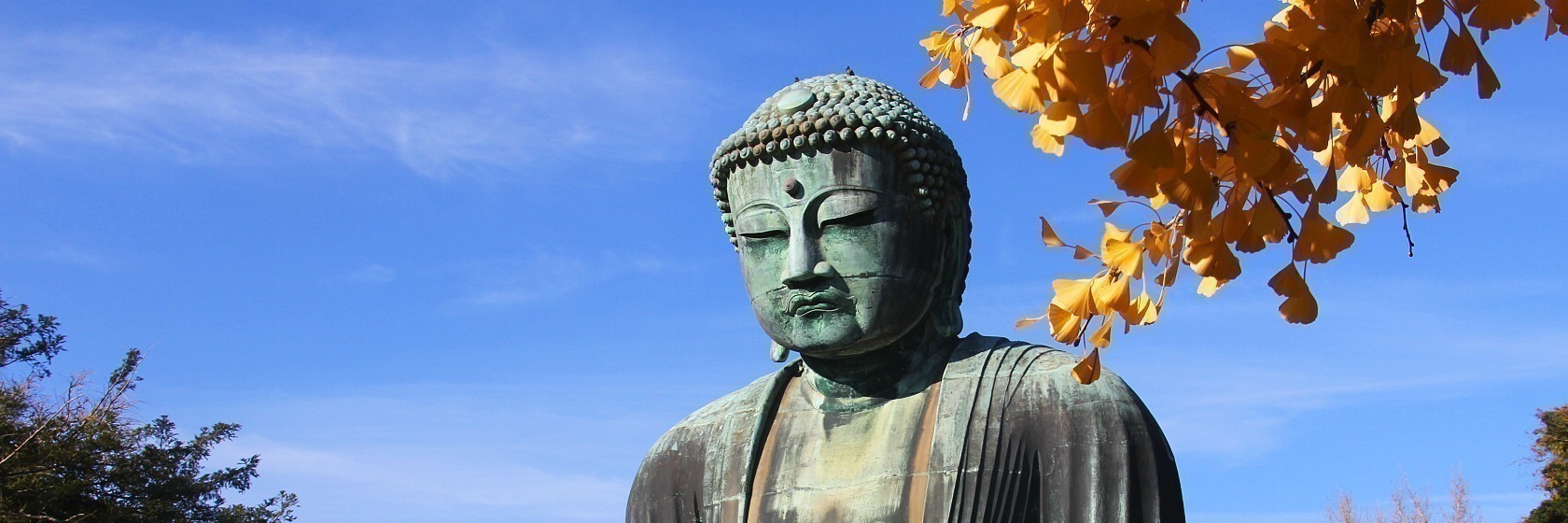
Kamakura (���q) is a coastal town in Kanagawa Prefecture , less than an hour south of Tokyo . The town became Japan's political center, when Minamoto Yoritomo chose it as the seat for his new military government in the late 12th century . The Kamakura government continued to rule Japan for over a century, first under the Minamoto shogun and then under the Hojo regents.
After the decline of the Kamakura government in the 14th century and the establishment of its successor, the Muromachi government in Kyoto , Kamakura remained the political center of eastern Japan for some time before losing its position to other cities.
Today, Kamakura is a small city and a very popular tourist destination. Sometimes called the Kyoto of eastern Japan, Kamakura offers numerous temples , shrines and other historical monuments. In addition, Kamakura's sand beaches attract large crowds during the summer.
Top attractions in Kamakura
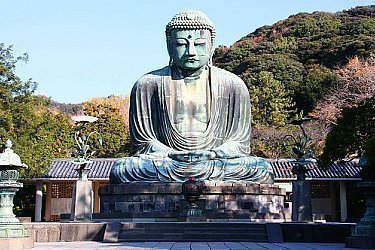
Kamakura by interest
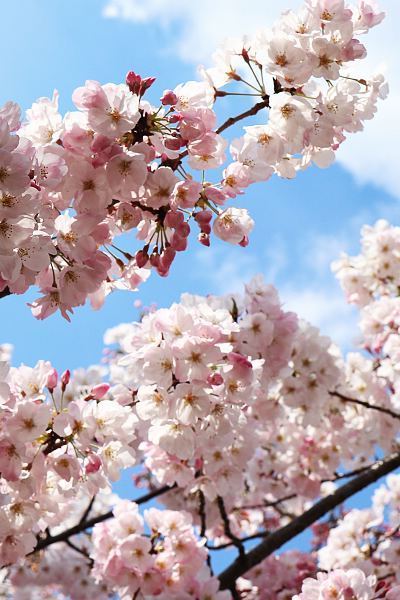
Getting there and around
Itinerary ideas.
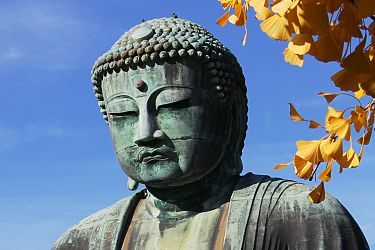
- Enjoy the view from Hasedera Temple
- See the iconic Great Buddha
- Visit two historic Shinto shrines
Questions? Ask in our forum .
Links and Resources
Kamakura city, hotels around kamakura.

Kamakura, Enoshima, Fujisawa tourist information portal site

One hour from Tokyo to “the outing spot” where fully enjoyable its history and nature in all seasons throughout the year.
Kamakura, Fujisawa are located suburb of Tokyo by train within one hour. The historic inheritances such as Shinto shrine Buddhist temples are left, and also Kamakura is the tasteful town which is blessed with nature surrounded by the sea and the mountains. Fujisawa has many tourist facilities including famous touristic place “Enoshima”, and various events are carried out through the year. The superb view of Mt.Fuji as well as the beautiful sunset can be seen in Fujisawa, too.
Access to Kamakura, Fujisawa Access -->

Image is for illustrative purposes.
Topics Topics -->
- -A map of Enoshima Electric Railway lines is included that can be used even without a network connection.
- -The best 10 sightseeing spots/picturesque spots are shown.
- -Three Kamakura hiking trails are introduced with detailed maps that can be used offline.

Guide Guide -->

Tourism-Traffic information

ディープな観光を体験したいのなら、 こちらをチェック!

Check at tourist information center about the recommendations for sightseeing spots of regional excursion trips.
Shonan fujisawa concierge.

- Business Hours : 9 a.m.-5 p.m.
- TEL:0466‑50‑0001
- Concourse on 2F by south exit of Fujisawa station
- Google Maps
Fujisawa City Tourist Center

- Business Hours:8:30 a.m.-5 p.m.
- TEL:0466‑22‑4141
- Approx. 1 min. on foot from Katase-Enoshima Station, Odakyu Line
- Approx. 7 min. on foot from Enoshima Station, Enoshima Electric Railway
Katase-Enoshima Tourist Information

- Business Hours : 8:30 a.m.-5 p.m.
- TEL:0466‑24‑4141
- Approx. 5 min. on foot from Enoshima Station, Enoshima Electric Railway
Enoshima Tourist Information

- Business Hours:9 a.m.-5 p.m.
- Approx. 12 min. on foot from Katase-Enoshima Station, Odakyu Line
- Approx. 20 min. on foot from Enoshima Station, Enoshima Electric Railway
Kamakura City Tourist Information Center

- Business Hours:
- Summer (Apr.-Sept.) 9 a.m.-7 p.m.
- Winter (Oct.-Mar.) 9 a.m.-6 p.m.
- TEL:0467‑22‑3350
- Next to the East Exit of Kamakura Station, JR Yokosuka Line
Kamakura City Tourist Association

- Business Hours:8:30 a.m.-5:15 p.m.
- TEL:0467-23-3050
- Next to the West Exit of Kamakura Station, JR Yokosuka Line/Enoshima Electric Railway
Ticket Ticket --> Make a smart trip! With excursion tickets.
- Enjoy Enoden! Enoden One day pass ticket “Noriorikun”
- Have an afternoon trip Kamakura-Enoshima Afternoon Pass
- Attractions in Enoshima! Enoshima 1-Day Pass eno=pass
- One day Kamakura excursion! Kamakura Free Environment Bill (one day pass)
- Enjoy monorail! One Day Ticket Kamakura-Enoshima "Shonan Monorail"
- JR and monorail to get around Kamakura-Enoshima Pass (JR)
- Access by Odakyu Enoshima-Kamakura Freepass
Hotel Hotel -->

Japanese site
©KAMAKURA・FUJISAWA Tourism Council
TEL:0466-24-2715
- Tours & Experiences
- Tailor-made Trips
- Bahasa Indonesia
We are happy to see you again!
Continue with
Or use email.
No Account? Create one
Create account
Already have an account? Sign in
Quickly Sign up with
I agree to Japan Travel's Terms of Service and Privacy Policy . Terms of--> and acknowledge that Japan Travel's Privacy--> applies to me.-->
Email reset password link
Please check your inbox and click the link we will send to you.
Dive Deep Into Kamakura
Discover more of the city with the 33-Kannon pilgrimage
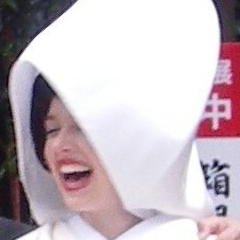
As an ancient capital, Kamakura is dotted with temples and shrines. So many are there, however, that most visitors are able to explore just a fraction. Go beyond the usual Kamakura itinerary with the help of the 33-Kannon pilgrimage, one of several spiritual journeys that crisscross the city.
The pilgrimage, which requires several days or multiple trips to the city, will take you to temples both large and small as you gather seal stamps ( goshuin ) in a special seal-stamp notebook ( goshuincho ). Along the way, you’ll discover that some of Kamakura’s most spectacular sights remain off the beaten track. You’ll also walk away from your journey with a precious souvenir: your goshuincho filled with artistic calligraphy and vibrant vermillion stamps.
The 33-Kannon Pilgrimage
Japan is home to many pilgrimages of various histories and length. Some are ancient and long, like the Shikoku Henro , an 88-temple circuit around the island of Shikoku with roots that stretch back over 1,000 years and a trail that stretches out more than 1,000 kilometers; some are new and short, like the Kamakura-Enoshima Shichifukujin Pilgrimage , which dates to 1982 and takes place within the neighboring cities of Kamakura and Enoshima.
The Kannon pilgrimage, in Kamakura, is part of a larger collection of pilgrimages that can be found across Japan to sites that honor Kannon, the Buddhist deity of compassion (also known as the Goddess of Mercy). Though not the oldest by any stretch—that honor goes to the 1,300-year-old Saigoku Kannon Pilgrimage—the Kamakura pilgrimage, said to be based on an Edo period (1603–1867) pilgrimage, does have old roots. The current circuit dates to the Taisho and Showa periods (Taisho 1912–1926; Showa 1926–1989).
Why 33? Kannon is said to have 33 manifestations, and some pilgrimages do include all 33. Kamakura, however, does not. What the city does have is 33 ancient and celebrated Kannon, and so the pilgrimage will take you to these sites, located at temples across the hill-enclosed area of the city.
Some neighborhoods are home to multiple temples on the route. This makes it a good idea to split up the pilgrimage geographically, focusing on one area at a time. Though order doesn’t matter for the most part, visiting Sugimoto Dera Temple first (officially the first temple on the route) and Engaku-ji Temple last (officially the last) will earn you stamps acknowledging your pilgrimage’s beginning and end. Each stamp seal costs either ¥300 or ¥500, depending on the temple.
Eastern Area
Kamakura Station – (Sugimoto Kannon bus stop) – Sugimoto Dera Temple – Zuisen-ji Temple – Hokoku-ji Temple – Jomyo-ji Temple – Myoo-in Temple – Kosoku-ji Temple – (Juniso bus stop) – Kamakura Station
Travel time: approximately 1 hour, 40 minutes (by bus and on foot); approximately 2 hours, 15 minutes (on foot)
*Please note that travel times do not include time spent exploring temples.
In the past, pilgrims walked. Modern-day pilgrims, however, use a variety of transportation methods to travel between pilgrimage sites. As Kamakura is a very walkable city, it is possible to visit all locations on foot. If you’re keen to maximize your time at each temple, however, take a bus from Kamakura Station, terminal five, to the Sugimoto Kannon bus stop to start, and from the Juniso bus stop back to Kamakura Station after visiting Kosoku-ji.
Sugimoto Dera, the oldest temple in Kamakura, is also the first temple on the Bando 33-Kannon pilgrimage which takes pilgrims all across the Kanto region of Japan. As such, quite a few pilgrim specialty items are sold in the temple shop, including a variety of seal-stamp notebooks (¥1,400–¥2,500).
As Sugimoto Dera typically isn’t overwhelmed with guests, pay your respects before choosing a seal-stamp notebook and requesting a seal stamp. Note that paying your respects first is standard pilgrimage etiquette, though busier temples sometimes suggest that you present your seal-stamp notebook first and come back for it after finishing your tour of the temple grounds.
Highlights of the eastern area
- The moss stairs at Sugimoto Dera
- The plum blossoms (from mid-February) and rock garden at Zuisen-ji
- The bamboo grove and teahouse at Hokoku-ji
- The Japanese teahouse overlooking a raked garden at Jomyo-ji
- The garden built into the cliffside at Myoo-in
Southeastern Area
Kamakura Station – Kofuku-ji Temple – Raiko-ji Temple (Zaimokuza) – Kuhon-ji Temple – Fudaraku-ji Temple – Renjo-in Temple – Senju-in Temple – Komyo-ji Temple – (Komyo-ji bus stop) – Kamakura Station
Travel time: approximately 55 minutes (by bus and on foot); approximately 1 hour, 10 minutes (on foot)
With only one major temple in the area, the southeastern section of the city is often left off Kamakura itineraries. As a result, you can wander the streets in relative peace and quiet as you travel from temple to temple.
Komyo-ji is the main draw, and this route leaves it for last. The Jodo sect temple boasts large grounds for a Kamakura temple, impressive gates, a raked garden and a pond where lotus flowers bloom in summer. It is one of the only temples in Kamakura whose main hall can be entered, so be sure to spend some time in the silence of the large tatami room.
The other area temples are small but beautiful, and quite close to each other. Some have limited hours, so keep in mind that you may walk away without a seal stamp. This is true of smaller temples along the rest of the pilgrimage as well. In fact, the Kamakura City Tourist Association suggests that visitors contact Kuhon-ji in advance, so if your Japanese allows, call the temple (0467-22-3404) to request an appointment to receive your seal stamp.
As there isn’t much difference between taking the bus and walking to reach Kofuku-ji, this route is timed to use the bus only to return to Kamakura Station from Komyo-ji. Komyo-ji bus stop is located not far from the entrance to the temple.
Highlights of the southeastern area
- Komyo-ji ’s main hall which allows entrance
- The vermillion gate and gardens at Senju-in
- The quiet, unassuming quality of most of the temples
- The proximity to the ocean
Downtown Area
Kamakura Station – Raiko-ji Temple (Nishi-Mikado) – Hokai-ji Temple – An’yo-in Temple – Betsugan-ji Temple – Kyoon-ji Temple – Enmei-ji Temple – Jufuku-ji Temple – Kaizo-ji Temple – Jokomyo-ji Temple – Kamakura Station
Travel time: approximately 1 hour, 30 minutes (on foot)
The best way to start this section of the pilgrimage is by traveling to Raiko-ji (Nishi-Mikado) by way of Tsurugaoka Hachimangu Shrine. You’ll find the cherry-tree lined approach to the shrine running down the middle of Wakamiyaoji, the city’s main avenue, beginning under a large vermillion torii gate.
Though nine temples in one day sounds like a lot, several of the temples are clustered together and many are quite small. After paying your respects and receiving your seal-stamp notebook, you’ll find there’s nothing left to do but head to the next temple. That being said, it is a full day's worth of exploring.
Jufuku-ji presents a challenge. The temple buildings are not open to the public and receiving a seal stamp requires some bravery to go beyond the “no entry beyond this point” signs. You are allowed as you are on temple business, so take a deep breath and follow the path. It sometimes happens, as with other temples, that seal stamps aren’t available on the day you visit. Another day, another chance. If your Japanese is good, avoid such a scenario by calling in advance using the phone number provided by the Kamakura City Tourist Association (0467-22-6607).
Highlights of the downtown area
- The plum blossoms (mid-February), bush clover (late-September) and other seasonal flowers at Hokai-ji
- The magenta azaleas at An’yo-in (May)
- The cemetery located behind Jufuku-ji , where some of Kamakura’s most famous former residents rest
- Kaizo-ji ’s seasonal blossoms and incredible gardens — be sure to follow the path behind the main buildings to see the yagura caves and back garden
Western Area
Kamakura Station – (Gokurakuji Station) – Gokuraku-ji Temple – Joju-in Temple – Kotoku-in Temple – Hase Dera Temple – (Hase Station) – Kamakura Station
Travel time: approximately 40 minutes (by train and on foot); approximately 1 hour, 20 minutes (on foot)
The western side of Kamakura can be reached by hopping aboard the Enoden Line , the city’s popular local railway. Since Gokuraku-ji and Joju-in are both quite small, visit them first and save Kotoku-in and Hase Dera for last.
While Kotoku-in is home to the Kamakura Daibutsu (Great Buddha)—who merits unhurried admiration—in addition to a small statue of Kannon, the temple grounds are small and can be enjoyed fairly quickly. Hase Dera, on the other hand, sprawls for a Kamakura temple, and if you thoroughly explore the grounds and visit the on-site museum, expect to spend well over an hour there.
Hase Dera can get very busy, and the temple advises people hand over their seal-stamp notebooks upon arrival rather than paying their respects to Kannon first. By the time you finish exploring, your seal-stamp notebook should be ready, and you can exchange the token you received earlier for your book.
Highlights of the western area
- The hydrangeas at Gokuraku-ji , Joju-in and Hase Dera (June)
- The view of the bay from Joju-in
- The fall foliage at Hase Dera (early to mid-December)
- The statue of Kannon at Hase Dera
- The Great Buddha (Daibutsu) at Kotoku-in
Kita-Kamakura Area
Kita-Kamakura Station – Tokei-ji Temple – Jochi-ji Temple – Meigetsu-in Temple – Kencho-ji Temple (Kencho-ji – Myoko-in sub-temple – Ryuho-in sub-temple) – Engaku-ji (Butsunichi-an) – Kita-Kamakura Station
Travel time: approximately 1 hour, 10 minutes (on foot)
The temples of Kita-Kamakura should be left for last, and of them, Engaku-ji should be saved for very last. All of the temples, except for Kencho-ji, are located in a fairly compact area around Kita-Kamakura Station, so though their grounds are relatively expansive, there isn’t too much walking to do between temples.
Kencho-ji, on the other hand, is located partway between Kita-Kamakura and Kamakura. Though the walk is a little on the long side, you'll receive three different seal stamps there—though not at the same location within the temple. Separate charges apply for each seal stamp.
As the temple complex is large, it can be somewhat confusing to locate the two sub-temples where you need to receive stamps. Temple priests and staff can help you out, showing you on the temple map where to go after you receive your first seal stamp at the main seal-stamp office located near the temple’s Somon gate. Again, you’ll need to pass by “no entry beyond this point” signs, but take heart: By virtue of being on the Kannon pilgrimage, you are allowed past.
At Engaku-ji, you will receive your final seal stamp not at the temple’s main seal-stamp office but rather at Butsunichi-an, a small temple located towards the back of the Engaku-ji grounds. A separate small fee is required to enter in addition to the seal-stamp fee.
Highlights of Kita-Kamakura
- The fall foliage at all area temples
- The hydrangeas at Meigetsu-in and Engaku-ji
- The gardens at Engaku-ji
- The cherry blossoms at Kencho-ji
- Tokei-ji ’s history as a refuge for women seeking divorce
- The hiking trails that begin near Jochi-ji ( Kuzuharaoka-Daibutsu trail ) and Kencho-ji ( Tenen trail )
- The crow- tengu on the hillside at Hansobo , the shrine located at the back of the Kencho-ji temple grounds
- The unique gate at Jochi-ji
Kamakura has so much to offer and deserves more than a quick visit to see the Great Buddha; it should be savored slowly and explored thoroughly. The Kamakura 33-Kannon pilgrimage allows you to do just that. Find joy in the journey and savor the feeling of accomplishment when you receive your final stamp.
Getting there
Kamakura and Kita-Kamakura can be reached via the JR Yokosuka Line.
- Share on Facebook
- Share on Twitter
- Copy link to share
By Helen Langford
Community writer

Information
Map ( Directions )
Explore nearby

48 Hours in Kamakura and Enoshima
By Jianne Soriano

Kamakura Camera — Autumn Colors
By Peter Oxley

Walking Kamakura in the Drizzle
By Min Jung Kim

Walking Kamakura
By Rey Waters
Top Articles
- Recommended

Guide to Golden Week

Cafe Gallery Doka Doka in Onna

SpongeBob Cafe “CAFE Secret Recipe” is Opening for a Limited Time in Shibuya

The Bridge of Dreams

Two New Demon Slayer Attractions Are Opening at Universal Studios Japan

A Tale of Two Temples

Cicada Sake and Teahouse

Experience the Sansha Taisai Festival!

A Quaint Ride on the Nagaragawa Railway

Anime Museums in Tokyo

Guide to Bringing Medicines Into Japan

Your Name: Real-Life Locations in Tokyo

Sanja Matsuri

Hachiko Statue in Shibuya

Shibuya Crossing

Japanese Urban Legends

Gion Matsuri


Daikoku Car Meet

Iwatayama Monkey Park

Guide to Suica Cards
More from this category, your name: real-life locations...
By Kylie Plester
By Ignatius Koh
By Veronica Carnevale
Join the discussion

Let us know how we can help.
Help us improve JapanTravel.com
We welcome any suggestions regarding this content. Your feedback is confidential and will be used to help improve this page.
Suggest an edit
https://en.japantravel.com/kanagawa/dive-deep-into-kamakura/66106
Thank you for your support!
Your feedback has been sent.
- Shojin-style cuisine
- Tofu variety
Tourist Information
- Human Tourism
- Restaurant Info

Zazen experience at 3 temples in Kamakura and Kita-Kamakura
1) Hokokuji Temple
Every Sunday morning 7h30 - 9h15
Participation & entrance fee: Free. No reservation required.
https://houkokuji.or.jp/zazen/ (in Japanese)
https://houkokuji.or.jp/en/
2) Engakuji Temple
- Every morning 6h
Participation: Donation is welcome. No reservation required.
- Every Saturday and 1st & 3rd Sunday 14h30 - 16h
Participation: 1000 yen. Entrance fee: 500 yen. No reservation required.
www.engakuji.or.jp/en/zazen/
3) Kenchoji Temple
- Every Friday & Saturday 15h30 - 16h30
Participation: Free. Entrance fee: 500 yen. No reservation required.
www.kenchoji.com/zazen/
- Zazen in English
Next sessions: May 30, June 27, August 29, Nov 5, 1h30 - 3h30.
Participation : 1500 yen including entrance fee . Reservation necessary.
www.kenchoji.com/news/#2775
Send an E-mail ([email protected]) with your name, nationality and the date you wish to participate.
^^^^^^^^^^^^^^^^^^^^^^^^^^^^^^^
The Kamakura Welcome Guide Association , inaugurated in 2008, brings together volunteer guides (54 guides in 8 languages) for foreign visitors, offering sightseeing tours every Friday without reservation and the services of a guide by reservation. https://kamakurawelcome.guide/
Visit Kamakura , website run by Kamakura City Tourist Association, for sightseeing information available in English, French, Spanish, Mandarin Chinese and Korean.
www.city.kamakura.kanagawa.jp/visitkamakura/en/
Map in English with some tourist information in English (download available)
www.trip-kamakura.com/img/downloadcontents/map-english.pdf
Carte en Français avec des infos en français (téléchargeable)
www.trip-kamakura.com/img/downloadcontents/french20230630.pdf
Japan Guide is a tourist information web site started in 1996 providing a wide range of travel guides covering 47 prefectures. They introduce Kamakura as "Small city full of historic treasures". www.japan-guide.com/e/e2166.html
Top 5 Things to do in Kamakura (No1.Great Buddha Daibutsu. No2. Hasedera temple. No3.Tsurugaoka Hachimangu Shrine. No4.Hiking Trails. No5.Hokokuji temple.) is a 7 mins video well presented with the narration.
www.youtube.com/watch?v=xapGKxTLc3I
Blogs of Matt Evans exploring six parts of the neighborhood of Kamakura.
www.japan-guide.com/blog/matt/
Other websites to find tourist information.
15 of the Best Photogenic Sightseeing Spots in Kamakura That You Have to Visit
www.tsunagujapan.com/15-top-must-visit-photogenic-sightseeing-spots-in-kamakura/
20 Things to Do in Kamakura Through the Seasons
https://livejapan.com/en/in-tokyo/in-pref-kanagawa/in-kamakura/article-a0005181/
Best trails in Kamakura
www.alltrails.com/japan/kanagawa/kamakura
Map of Kamakura Art & Culture
www.kamakura-arts.or.jp/kamakuraart/en/
Recommended Walking Tours
www.kamakura-arts.or.jp/kamakuraart/en/course/
Fun & personal guide of Kamakura by youtuber, Paolo
www.youtube.com/watch?v=CZ1ldANbQ8s
Enoshima has, from long ago, been an island steeped in legend, history, and faith.
https://discover-fujisawa.jp/
Media & Guide book
Articles about Kamakura by Sarah Hodge, travel and culture writer who's areas of interest include Japanese cuisine, kimono, Zen Buddhism, Japanese gardens and pilgrimages (she has visited Koyasan, Kumano Kodo...)
https://japan.stripes.com/travel/quick-trip-japans-spectacular-kamakura
www.nickkembel.com/kamakura-day-trip/

Kamakura: A Historical Guide
The author, Francesco Baldessari, who has lived in Japan almost 40 years, will take you on a visit to 28 of his favorite temples and shrines. And the history, religions, traditional art and architecture explained differently. [e-book 700 yen]
www.amazon.fr/Kamakura-Historical-English

LOCAL FOCUS :
Kamakura and Enoshima
210 pages of English guidebook full of information from the history of warriors, zen culture, the practical visiting ideas to the interview of local people and community experience.
[e-book 1200 yen]
www.localfocus.info
www.facebook.com/LOCALFOCUSjapanguidebook/

Welcome to Kina Village!
We, Kina Village, are here in Kamakura to make your stay with us enjoyable. Kina Village will support and help you to find your way to enjoy Kamakura just like the locals. Kamakura has been one of Japan’s most popular tourist destinations for years. The Area offers numerous temples, shrines and other historical monuments. In addition, Kamakura attracts large crowds during the summer months to its nearby beaches. It is also one of most popular cities in Japan to live. Kamakura Local residents enjoy its unique atmosphere to live a slow & relaxed life. This incorporates some good old fashioned style, along with some new modern fashionable style, based on the historical background of Kamakura. Kina village would like to introduce not only tourist information and tips but also life styles of local Kamakura citizens. Please join Kina Village and enjoy your stay in Kamakura!
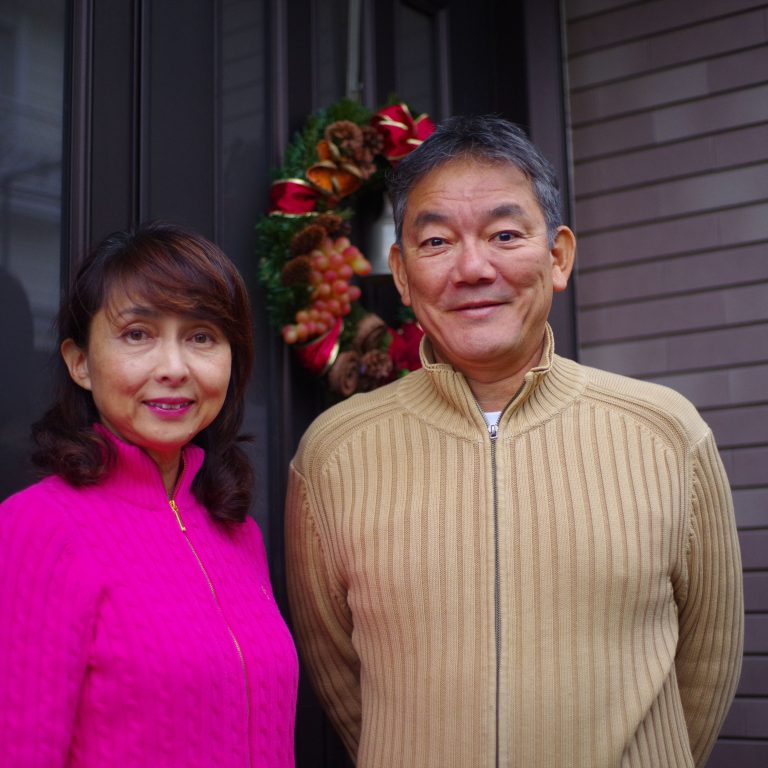
ISHIKAWA FAMILY
Nishikamakura.
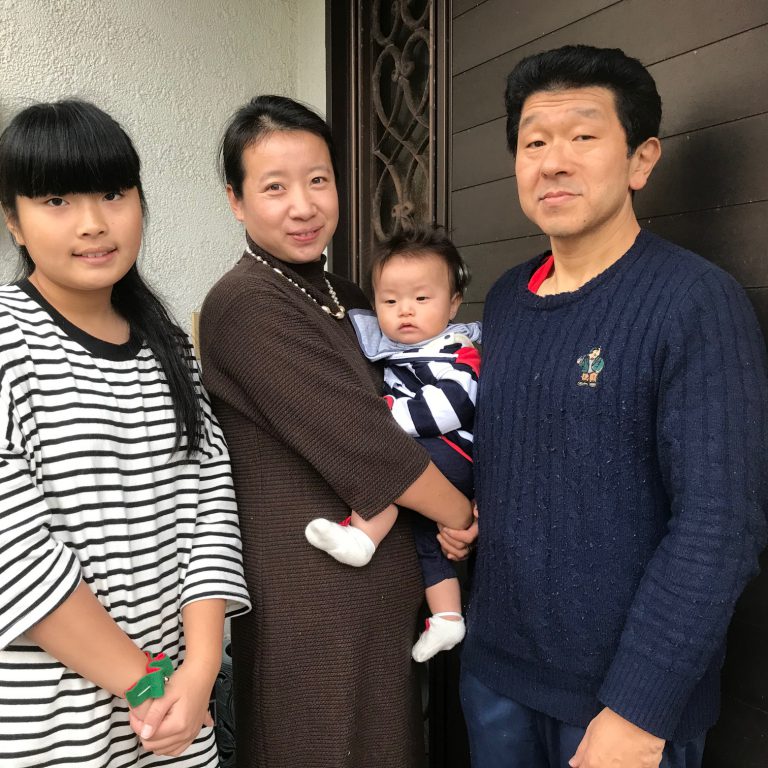
TAKANO FAMILY
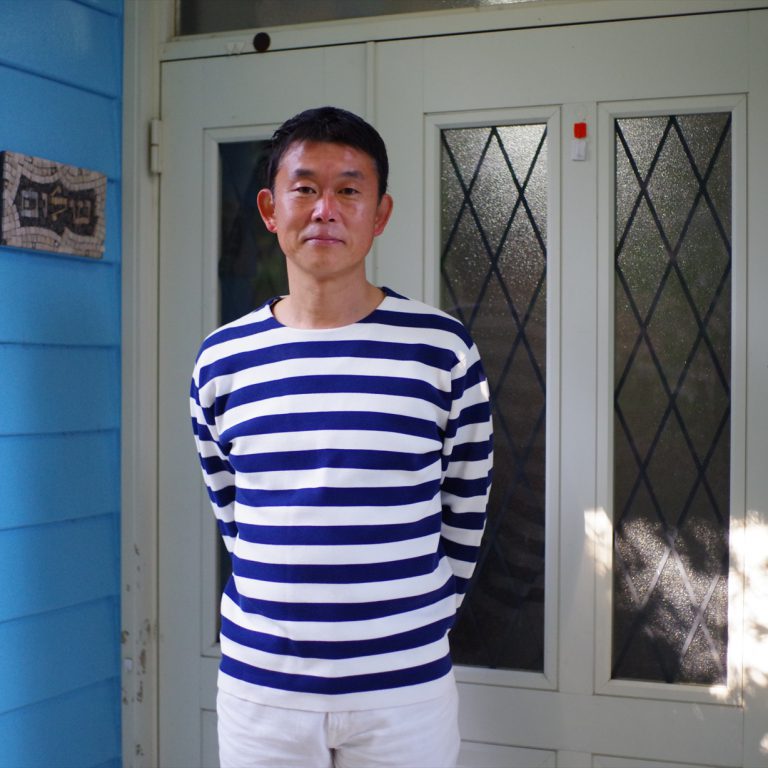
IMAIZUMI FAMILY
Kamakurayama, enjoy kamakura.
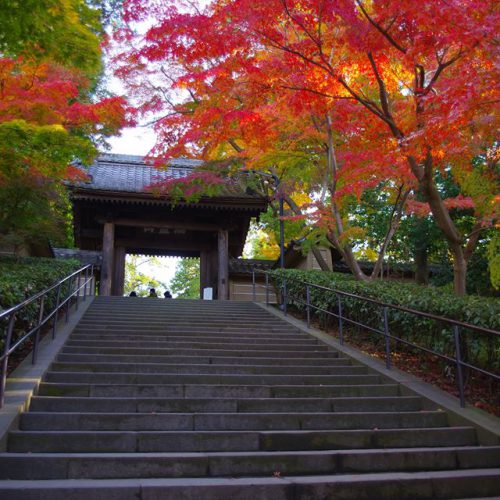
Autumn leaves in Kamakura 2017
Current situation of 2017 Autumn Leaves in Kamakura on November 26 & 27
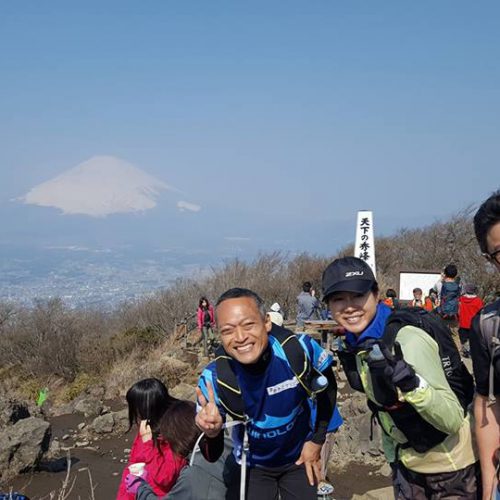
Hakone Mountains Outer Rim Trail Run / One day activity from Kamakura
Great one day activity from Kamakura for a active runner! Hakone Mountains Outer Rim Train Run
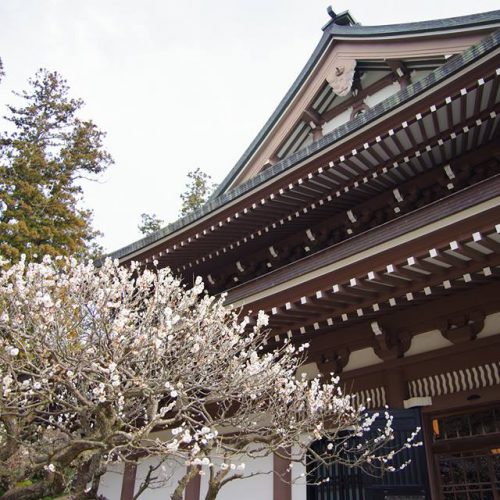
Plum Blossoms in Kamakura
One of seasonal features in Kamakura for winter is "Plum Blossoms". Standard Japanese Plum Blossoms are seen the best from mid-February to early March in Kamakura
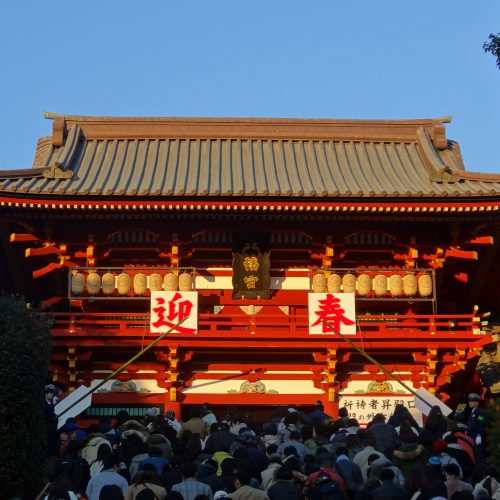
New Year Holiday Family Event / Kawabe Family 2017
Kina Village introduces 2017 Kawabe Family New Year events and some Japanese New Year customes
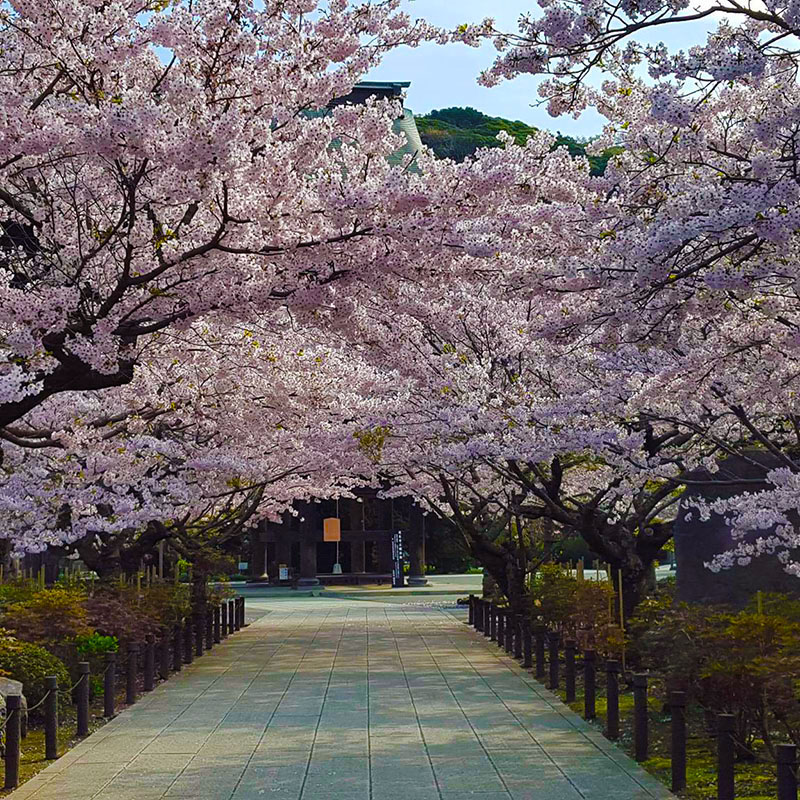
Cherry Blossoms/Azalea/Iris/ Hydrangea/Kamakura Festival/Hiking
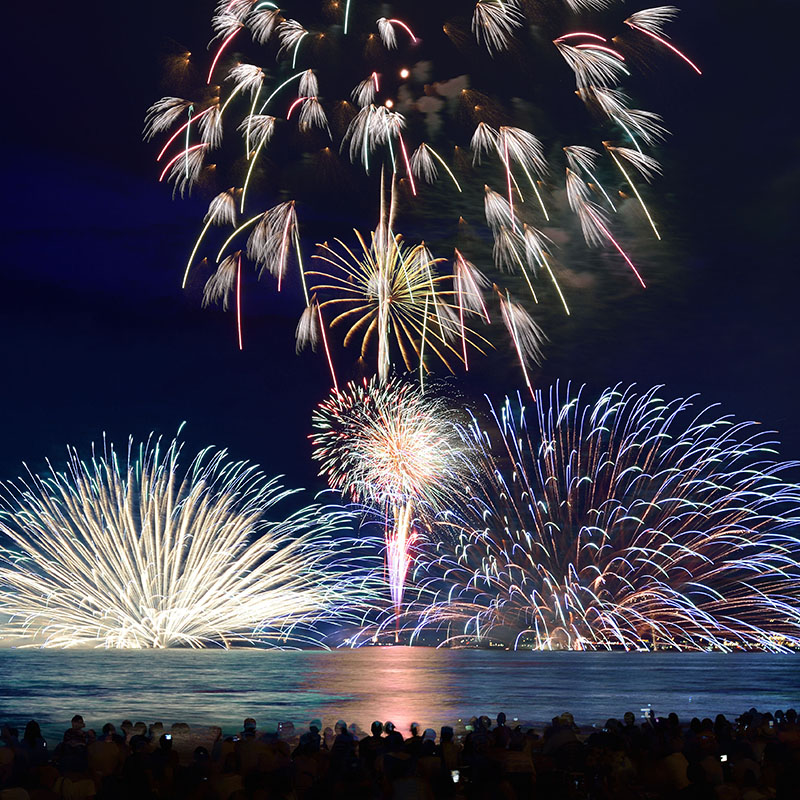
Beach & Summer house/ Firework festivals/ Traditional Festivals/ Whitebait ”Shirasu” (photo : Kamakura City Tourist Association)

Colored leaves/Sightseeing/Hiking (photo : Kamakura City Tourist Association)
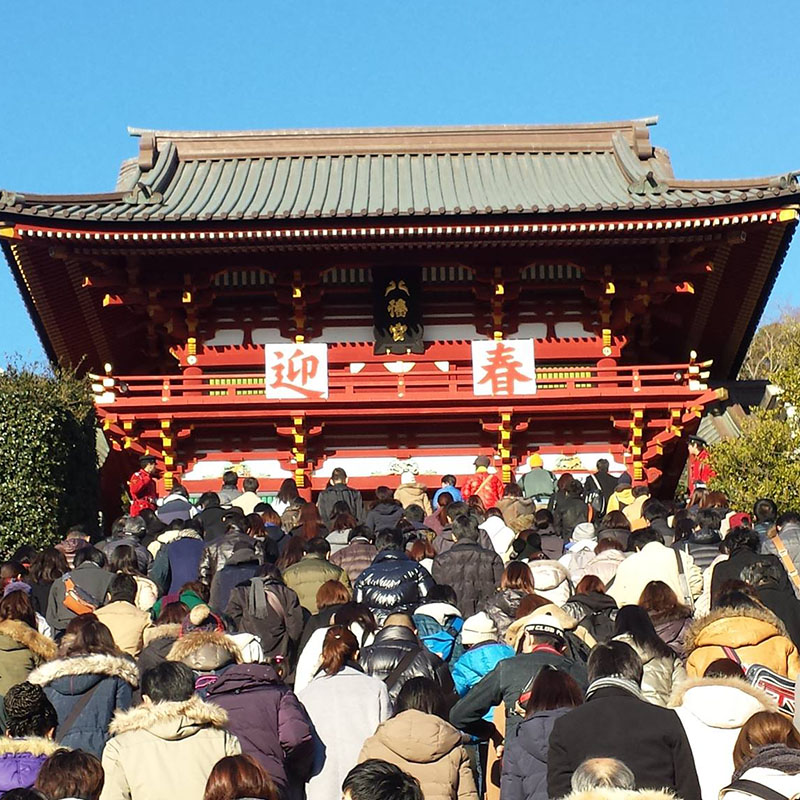
Most beautiful views of Mt. Fuji, the ocean and sunset in clear winter skies/ New Year Events/Plum blossoms
ACTIVITIES in KAMAKURA
Kina Village will introduce tourist activities and also daily activities of the local people. Since Kamakura has a variety of features, including the beautiful nature of the ocean, the mountains, and its rich cultural and historical background, it will provide many enjoyable experiences. The area will automatically create a variety of activities that will never get you bored, even if you stay for more than a week in Kamakura.
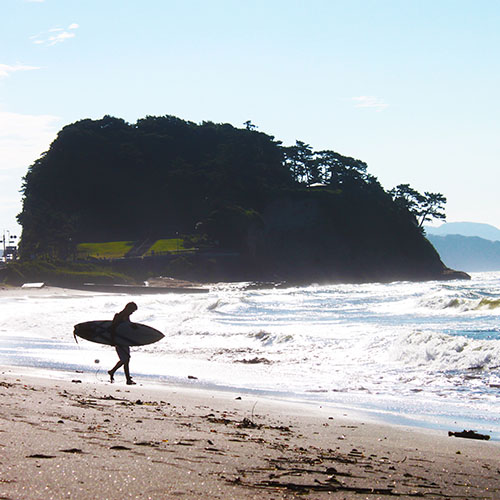
Sports and Outdoor Activities
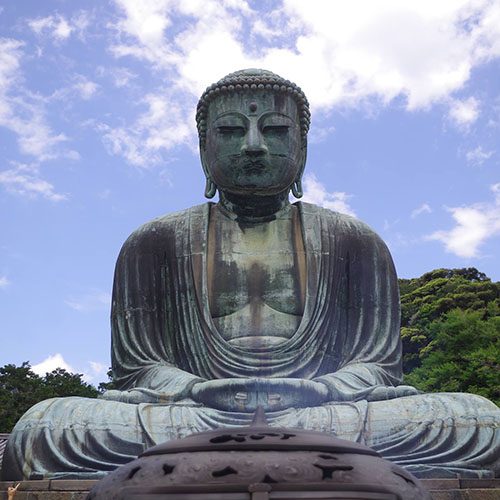
What to SEE
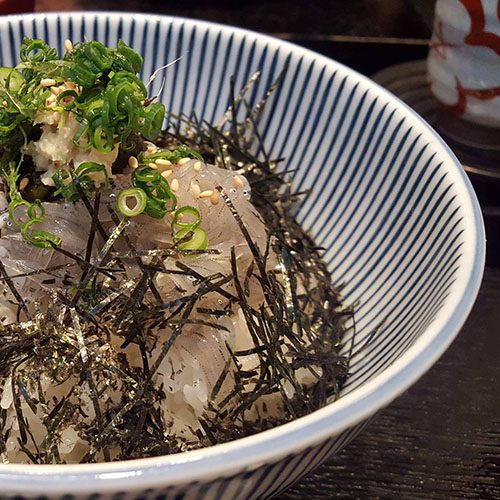
Where to EAT
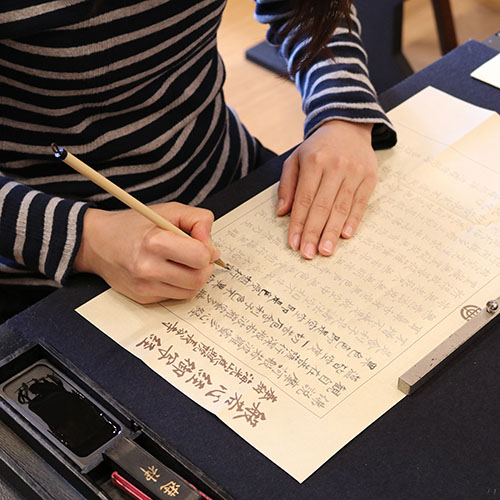
Things to DO
Information.
Kina Village Website opened and released to the public
Kina Village project started
WHAT is Kina Village?
Kina Village will make your stay unique and enjoyable. Once you step into Kina Village, Kina Village commits to your enjoyment and unique experience. You will be able to find your way like local residents to experience and explore Kamakura. Kina Village and the Village Principle, through long establish local networks and knowledge of the area, are here to ensure and enhance your stay.
- ABOUT Kina Village
- INAMURAGASAKI

- Privacy Policy

Copyright© Kina Village All right reserved.

Partnering with the Kamakura City Tourist Association
A tourism crm co-creation project: connecting domestic and inbound tourist voices to solve kamakura’s tourism challenges.
Koeeru is pleased to announce the signing of a Comprehensive Partnership Agreement with the Kamakura City Tourist Association (Headquarters: Kamakura City, Kanagawa Prefecture; Chairman: Michiaki Oomori). Through this partnership, both parties aim to use a customized CRM system to collect the voices of tourists, implement measures to solve tourism-related problems, and monetize the system for long-term sustainability.
As the first collaborative endeavor, we are launching the “Good Morning, Good Night Kamakura” project to focus to visualize tourists needs by gathering feedback from domestic and inbound tourists staying in accommodation facilities across Kamakura City.
Overview of the Partnership
Koeeru has concluded a comprehensive partnership agreement with the Kamakura City Tourist Association for the following in order to strengthen mutual collaboration in tourism marketing business in Kamakura, to build new relationships with tourists, and to promote tourism in Kamakura through the use of IoT technology:
- Co-creation of a Tourism CRM platform, starting from the listening to tourism feedback, for the purpose of promoting tourism in Kamakura
- Utilize the Tourism CRM platform to (1) improve the quality of tourist attractions, (2) develop tourism-focused communities that raise the earning power of the region, (3) create tourist attractions and strengthen tourism-related information dissemination, and (4) use data to expand into other industries.
- Initiatives to monetize the Tourism CRM platform
- Other activities necessary to achieve the overarching goal
We believe that the collaboration with Koeeru will enable us to understand what tourists are looking for in Kamakura. Now, we are working to conduct a survey of guests staying in our city, with those who respond receiving special Kamakura sightseeing information. In order to contribute to the refinement of Kamakura tourism, we will continue to strengthen the Association’s tourism marketing business.
Chairman Michiaki Omori, Kamakura Tourism Association
As a startup from Kamakura with experience in the Tourism CRM business, we are very pleased to have this opportunity with the Kamakura City Tourism Association to contribute to our hometown. We aim to both contribute to society by working together with local businesses to connect the feedback we collect to solutions and, as a startup, to turn this regional co-creation project into a long-term viable business.
CEO Soji Nagano, Koeeru Inc.
About the “Good Morning, Good Night Kamakura” Project
As the first initiative of the partnership, the “Good Morning, Good Night Kamakura” project will be launched in April to collect the opinions of tourists staying in at local lodging facilities in the city and to see how city businesses can improve tourist spending.

Project Summary
- Implementation Period: Ongoing from April 2024 to March 2025 (results will be compiled quarterly with analyzed results made available to members only)
- Survey target: Tourists (Japanese and inbound) using lodging facilities in Kamakura
- Survey languages: Japanese, English, Chinese (simplified and traditional), Korean
- Survey locations: 6 lodging facilities in Kamakura (Kaikinso Kamakura, Kakiya Ryokan, Kamakura Prince Hotel, Kamejikan, Sotetsu Fresa Inn Kamakura-Ofuna Higashiguchi, Hotel Metropolitan Kamakura)
About the Kamakura City Tourist Association
Since its establishment in 1950, the Kamakura City Tourist Association has developed projects to revitalize Kamakura through tourism, such as the Kamakura Festival, Kamakura Fireworks Festival, and Kamakura Takigi Noh Play.

Profile Company Name: Kamakura City Tourist Association Location: 1-12 Onarimachi, Kamakura City, Kanagawa Prefecture Establishment: 1950 HP: https://trip-kamakura.com/
About Koeeru
Since its establishment in 2021, Koeeru Inc. has been providing sustainable DX solutions in the global marketing research, digital marketing, Tourism DX, Customer Experience, and and Social Enterprise fields.

Profile Company Name: Koeeru Inc. Head Office: Yamaguchi Bldg. 3F, 1-8-1 Oogigayatsu, Kamakura, Kanagawa, Japan Vietnam Branch Office: Floor 17, Ngoc Khanh Plaza, No 1st Pham Huy Thong, Ba Dinh, Hanoi, Vietnam CEO: Soji Nagano Establishment: 2021
Related Articles

JETRO Selects Koeeru for a New Business Model Support Program

Announcing the Integration of Syno Japan and Koeeru

Koeeru’s SHEP Marketplace “Mi Mercado Verde” selected for the Business (B2B) course of TSUBASA2023, organized by JICA/IDB Lab

Announcing Voice for Osaka: An Osaka Support Project to Promote DX throughout Osaka Prefecture
Receive Updates to your Inbox!
Sign up for our newletter to receive timely updates, how-to tips, and invitations to webinars and events.
Keep Me Updated
Email me with timely updates, how-to tips, and invitations to webinars and events.
Download Now
- 1.1 Tourist information site
- 2.1 By plane
- 2.2 By train
- 3.1 By bike
- 4.1 Central Kamakura
- 4.2 Western Kamakura (Hase)
- 4.3 North Kamakura
- 4.4 East Kamakura
- 5.2 Beaches

Kamakura ( 鎌倉市 ) is a small city in Kanagawa Prefecture, south of Tokyo , Japan . It is a very popular destination among Tokyoites for its beaches, lively center and many temples. It is the perfect place to take a day off from Tokyo's stress.
Kamakura is a nice seaside town with a relaxed atmosphere. Hard to believe it was the political capital of Japan during the Kamakura shogunate, from 1185 to 1333.
Tourist information site
The local tourist association has a bilingual guide site .
Kamakura is a very popular day trip from Tokyo for locals and tourists alike, and there are plenty of transportation options.
From Narita Airport, the fastest and most expensive way to reach Kamakura is to take the Narita Express in the direction of Yokohama or Ofuna, and then change to the JR Yokosuka line for the run to Kamakura. This takes approximately 2 hours and costs ¥4500, although foreigners can purchase a N'EX Tokyo Direct Ticket . This ticket is only sold in a round-trip version for ¥4000. It may be more convenient to change to the Yokosuka Line at intermediate stations, where it is as simple as a same-platform or cross-platform transfer: If the Narita Express terminates at Yokohama, change at Musashi-Kosugi; if it terminates at Ofuna, change at Totsuka.
Regular JR commuter trains depart Narita Airport once per hour: some trains offer one-seat rides to Kamakura station, or else change at wherever the train terminates to the next train bound for Zushi, Yokosuka or Kurihama (About 2½ hours, ¥2210). These trains offer a ¥950 Green Car seating upgrade; Green cars feature more comfortable seats and a drink and snack service.
From Haneda Airport, take any Keikyu Line Express (急行) train bound for Zushi-Hayama or Kanazawa-Bunko, and change at Yokohama station for the JR Yokosuka line (One hour, ¥800).
Or, change at Kanazawa-Hakkei or Zushi-Hayama for Keikyu-bus. Kanazawa-Hakkei~Kamakura (鎌24, Kama24bus) 2 per hour. Zushi-Hayama~Kamakura (鎌40, Kama40bus) 3~4 per hour. Miura peninsula 1 day/2 days ticket (三浦半島1DAY・2DAYきっぷ) [1] (Japanese Only) (From Haneda-airport 1 day ¥1,980 2 days ¥2,200) is useful.
If you plan on staying at a Ryokan it may be a good idea, unless your plane lands in the morning, to spend your first evening in Tokyo or Yokohama , or else you might miss out on (and be charged for) dinner at the ryokan, or worse, you may be locked out of (and be charged for) your room at the ryokan's curfew time, if there is one. If you plan to stay at a budget accommodation, check to see whether or not it has a curfew time.
The fastest way to Kamakura Station is by JR Yokosuka Line from Tokyo Station (one hour, ¥920) or Yokohama (25 minutes, ¥330).
An alternative is to take the private Odakyu line from Shinjuku to Fujisawa , then change onto the rattling old Enoden (江ノ電) half-train/half-streetcar line that terminates in Kamakura. The longer (about 90-minute) travel time is compensated for by views of Enoshima island and the Shonan coast. The Enoshima-Kamakura Free Pass will get you a roundtrip from Shinjuku (or other Odakyu, Seibu and Sotetsu stations) and unlimited use of the Enoden line for one day.

Kamakura is just a little too big to cover on foot, but a network of buses radiates out from the train station. Kotokuin and Hasedera can also be reached by taking the Enoden line three stops out to Hase station. Another option is to rent a bicycle for your tour.
Nevertheless, for the energetic ones, there is a nice hike starting from Jōchiiji temple and ending near the Kōtokuin. You will walk, with some climbing, through forest. The hike also passes through Zeniarai Benten Shrine, if you are curious about the money washing ceremony. The hike takes about 3 hours, if you also stop and visit the temples along the way. Even in summer, the shade on the path manages to keep the temperature bearable. If you are on a day-trip, doing the hike limits a bit the chances of visiting some of the less reachable temples. An easy way to get to Jōchiiji temple is to take the JR Line train from Kamakura station to Kitakamakura Station where the temple can be found by exiting the station, turning left and walking 500 m up the road. The walk starts to the left of the temple and you are not required to pay the ¥200 entrance fee to the temple to start the hike.
Bicycles can be rented from several locations, though rates are expensive.
- 35.318544 139.550816 1 Kamakura Rental Cycles ( 鎌倉レンタサイクル店 ), 小町1丁目1 ( Take the east exit of JR Kamakura Station and go 50m south. ), ☏ +81 467-24-2319 . Daily 08:30-17:00, closed Jan 1-3 . This rental shop has standard Japanese bicycles for rent, including battery-assisted bikes. 1 hour ¥800, additional hours ¥250 each; bicycles with batteries extra .
Kamakura's sights are scattered around the city. Most visitors make a beeline for the Great Buddha and stop off at Hase Kannon on the way; these sights can be very crowded on weekends and holidays.
Central Kamakura
- 35.32605 139.556472 1 Tsurugaoka Hachimangū Shrine ( 鶴岡八幡宮 ), ☏ +81 467-22-0315 . The largest Shinto shrine in otherwise almost solidly Buddhist Kamakura, built by Yoritomo Minamoto (1147-1199) founder of the Kamakura Shogunate and the first Shogun in the Kamakura Period (1185-1333). Just a bit north of the station, this shrine attracts a million visitors on New Year's Day to see the first sunrise of the year (Japan Rail runs trains all night long). If you're lucky, you may see a traditional wedding going on in the plaza in front of the main shrine. The Ritual Dance Stage (舞殿) is the spot where Yoritomo forced the hunted Yoshitsune's Lady Shizuka to perform a dance for him. Rather than celebrating Yoritomo, Lady Shizuka's dance expressed her love for Yoshitsune and her sorrow at his plight. This event is commemorated during the Kamakura Festival in April. Twice each year, in the spring and fall, you can watch demonstrations of Yabusame (archery from galloping horseback, in full samurai regalia) at Hachimangū. A large portion of the site is not wheelchair accessible .
Western Kamakura (Hase)
The following sights are in western Kamakura, mostly near the Enoden Hase station.
- 35.316837 139.535733 3 Kōtokuin ( 高徳院 ), ☏ +81 467-22-0703 . 08:00-17:30 (April–September) 08:00-17:00 (October–March) . Home of the famous Great Buddha (大仏 Daibutsu ), a bronze statue of Amida that at 13.35 meters is the second largest bronze statue in Japan (second only to that in Nara 's Todaiji). Thought to be cast in 1252, the statue was originally housed in a giant temple hall, but the building was washed away in a tsunami. Entrance to temple ¥300, entrance to inside of Buddha statue is temporary closed . ( updated Oct 2022 )
- 35.312985 139.533931 4 Hasedera ( 長谷寺 ), ☏ +81 467-22-6300 . This temple, also called "Hase Kannon", is home to the largest wooden statue in Japan, representing Buddhist deity Kannon. An interesting if somewhat claustrophobic grotto on the grounds is filled with statues of Benzaiten. ¥300 .
- 35.32575 139.542248 5 Zeniarai Benten Shrine ( 銭洗い弁天 ), ☏ +81 467-25-1081 . An atmospheric shrine in the hills dedicated to the deity Benzaiten, but popularly named after the most common activity: according to legend, any money ( zeni ) washed ( arai ) in the cave here will be doubled. You can also purchase o-mamori (protective charm) and have a kannushi (shinto priest) strike sparks from a flint over it to increase its power. It is about a kilometer away from Kamakura station. As there is no direct bus service, those in a hurry should take a taxi. Otherwise, the undemanding 20-minute stroll gives pleasant views of residential areas with quiet gardens. The shrine itself is reached via a long, but well-illuminated tunnel bored right through the rock. The hill above, Genjiyama, has a park with excellent views over the city. It is also a popular place for viewing the cherry blossoms in early spring. From here you can reach the hiking trail running from Tokeiji to the Kōtokuin.
North Kamakura

The artist Isamu Noguchi lived and created ceramics in Kita (North) Kamakura in 1952.
- Kenchōji (建長寺). The temple is the first of Kamakura's Five Zen Temples, being the oldest in Kamakura (built 1253) and among the oldest in all of Japan. The temple bell has been designated a National Treasure. Also prized is the Zen garden on the grounds.
- Engakuji (円覚寺). The temple is ranked second among Kamakura's Five Zen Temples, founded in 1282 to commemorate soldiers who fell fighting the Mongol invasion the previous year. The Shariden on the temple grounds houses a holy relic, reputed to be a tooth of the Buddha. Atop a nearby hill is the bell tower and the tea house famous for its tokoroten (sweet cold noodles) — an acquired taste to overseas visitors as many would find the dish salty and slimy.
- Tōkeiji . (東慶寺). It was established as a nunnery, and was famous during the feudal era for sheltering abused women fleeing their families. It thus earned the nickname "Kakekomidera" (the fugitive temple). Those who remained at the temple for three years could then obtain a divorce. Tōkeiji's large atmospheric graveyard and blooming ume (Japanese plum) are also major attractions. ( updated Oct 2017 )
- Meigetsuin (明月院). The temple is nicknamed the "Hydrangea Temple" with the surrounding grounds amply planted with the flowers. The temple is also renowned for the grave of Hojo Tokiyori, approached by a tunnel, the largest of its type in Japan. It is a 10-minute walk from JR Kita-Kamakura Station. The temple is open 09:00 to 16:00. Cost of admission: ¥300.
East Kamakura
The temples of eastern Kamakura lie off the beaten tourist track and are for that very reason worth a visit. While you can reach these on foot, it's probably wiser to take a bus as there's still a fair bit of climbing to do just to get around the temples.
- Jōmyōji (浄妙寺). Sample tea ceremony on the cheap here with a ¥500 cup of matcha tea in the gardens.
- Sugimotodera (杉本寺). Located on a tranquil hillside, the temple is accessed by a newer stone stairway to the left of the even steeper, original steps, well-worn by countless pilgrims through the ages. The altitude affords sweeping views of the town. The temple holds the title as the oldest temple in Kamakura, having been founded in 734. Among its treasures is the eleven-faced statue of Kannon.
- Shakado Kiritoshi (釈迦堂切り通し). Fifteen min walk from Sugimotodera. As Kamakura is surrounded by mountains on three sides and the ocean on the fourth, the town was easily defended in times of unrest, but the geography also left the town cut-off from neighboring valleys. A network of narrow roads were cut through the mountains, providing the connections but keeping the site defensible. The Shakado Kiritoshi (pass) is one of the roads cut through solid rock. It remains impressive even by today's standards. It has been impassable since April 2010 due to a large rockslide.
- Hōkokuji (報国寺). Notable for its lovely bamboo grove. You can get matcha here too.
- Taya Cavern ( 田谷の洞窟, Taya no Dookutsu ), Josenji Temple, Sakae-ku, Taya-machi 1501 ( take the JR Yokosuka Line two stops north of Kamakura to Ofuna Station; take a bus bound for Totsuka Bus Center; after about 8 minutes, get off at Dookutsu-mae bus stop; the temple is just to the right of the large radon spa building ), ☏ +81 45 851-2392 . Daily 08:00-16:30 . This is actually in Yokohama, but is closer to Kamakura both geographically and historically. From about the year 1200 to 1700, Shingon Buddhist monks gradually excavated this underground maze of tunnels as a site for spiritual training. You will be given a candle which you slip onto a wooden holder outside the entrance, and light at the candle inside the doorway. Damp, silent corridors lead to small, domed meditation chambers with walls and ceilings carved with fantastic creatures and Buddhist images, and on down to the spring room with a great turtle and birds carved on the walls. A small flashlight would be useful to see the images that candlelight doesn't reach. Adults ¥400, HS/JHS students ¥200, children ¥100 .
Near Taya Cavern, there are some other attractions to see.
- Suenosato ( 陶郷(すえのさと) ), Taya-machi 1483 ( A short walk up the hill to the left of the radon spa building. ), ☏ +81 45 851-8855 . A studio displaying beautiful and expensive handcrafted pottery and glassware that range from whimsical to Wabi-sabi.
- Yukai Sokai Taya ( 湯快爽快たや ), Taya-machi 1463 ( Exit the cavern temple and turn left along the road. ), ☏ +81 45 854-2641 . daily 10:00-03:00 . A spa housed in a building with the large neon character for bath on the roof. M-F ¥600, Sa Sun ¥700 .
- Fueda Park ( Keihinkyuko bus from Kamakura station to Fueda ). This park has a baseball field, 4 tennis courts and a large multipurpose field. Sports equipment is available for rental. A soccer ball, basketball, or tennis racket costs ¥100 for 2 hours. 4 gloves, 2 bats and 4 balls cost ¥3000 per 2 hours including the field charge. Also, many people enjoy walking, jogging or riding around the park seeing the nice scenery. As this park is located at the high spot, you can enjoy nice views of Mt.Fuji and the sea.
Kamakura has several hiking trails that can provide relief from the crowds at the more popular shrines and temples. The Daibutsu hiking course starts a few hundred meters down the road from Kōtokuin. The trail has several offshoots that lead to various small shrines and temples. If it has rained recently, the trail could be muddy and there are several steep sections.
From Tokyo, an option is to get off the train at Kita-Kamakura and hike down to the city center or to the Great Buddha via the hills.

Kamakura is not just a historical city which has a lot of temples, shrines, and other historical buildings — there are also some popular beaches in Kamakura. You can feel the atmosphere of the Shonan Coast in the bright sunshine and have a good time there, especially in summer.
- 35.309259 139.542257 1 Yuigahama ( 由比ヶ浜 ) ( Several hundred meters south of Yuigahama Station. ). This is a representative beach in Kamakura, so many people visit in summer to enjoy the sea-bathing there. It is also a spot for a good view of the firework display held in summer. Kamakura is famous for aquatic fireworks. (Just remember when walking along this beach that it was not so long ago that a lot of dismembered heads buried in and near the sand were found. The heads were very old, from an era when Japan was not such a friendly place). On the far right side, you can see small wooden boats that fishermen carry to top of the beach. You can rent windsurfs and stand up paddle boards at the very right end of the beach. There are several surf rental shops, and one full-day rental with board and wetsuit included usually starts from ¥5000, half-days are available but not much cheaper.
- 35.301988 139.525611 2 Inamuragasaki ( 稲村ヶ崎 ) ( a one-minute walk S from Inamuragasaki Station. ). This is also a famous beach. The Inamuragasaki Park (稲村ガ崎公園 Inamuragasaki Kōen ) is there and is well known for its sunsets. The film "Inamura Jane" (稲村ジェーン), directed by Keisuke Kuwata, was set there. The remains of the Hojo, Kamakura's government, was destroyed there in 1333. It follows along National Road 134.
- 35.304067 139.514201 3 Shichirigahama ( 七里ヶ浜 ) ( several hundred meters SE of Shichirigahama Station. ). This is also a famous beach in Kamakura. Unfortunately, swimming is prohibited. But it's still a good beach to relax and have an enjoyable time. Many surfers enjoy surfing there.
Kamakura is famous for a biscuit called Hatosabure (鳩サブレー), a biscuit shaped like a pigeon. Sold next to Kamakura station and a very popular omiyage (souvenir) among the Japanese.
Alternatively, combine good taste with bad taste by purchasing a pack of Giant Buddha shaped pastries stuffed with red bean paste, sold at the souvenir stands in and near Kotokuin.
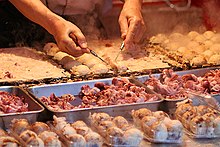
There are a large number of places to eat in the vicinity of the train station. For a snack, try the local specialty, purple potato soft ice cream ( murasaki-imo sofuto ), which tastes much better than it sounds (or looks). It is made from the purple sweet potato found throughout Japan.
In Komachi street, there is a rice cracker ( senbei ) shop where you can toast your own senbei . One cracker costs about ¥200.
- House of Flavours ( Holthaus Fusako's ). Café famous for its cheesecake.
- Roastbeef Kamakurayama . Famous for its roast beef. It's very fashionable, so can't wear rough clothes like jeans or short pants. Reservation is always needed and the cost is high at this restaurant.
- Raitei ( 檑亭 ), Fueda . Soba restaurant. More expensive than other places, but delicious.
During the summer months, many temporary bars are set up on the beach due south from the train station, some of them feature live bands and DJ's and it's generally a very good atmosphere. And don't miss the last train home if you are staying in Tokyo, last minute accommodation late in the evening is simply not an option during the busy summer months.
Most visitors daytrip from Tokyo , but there is a pretty good selection of accommodation if you want to spend the night.
- 35.354494 139.533148 1 Sotetsu Fresa Inn Kamakura Ofuna Station East Exit ( 相鉄フレッサイン鎌倉大船駅東口 ) ( 1 min from JR Ofuna Station. ), ☏ +81 467-42-2031 . Very comfortable. The chain has another premise near the station, ...Kasama Exit . Most low cost ¥7400, Internet reservation ¥6500 .
- 35.307351 139.552218 2 Kamejikan Guest House , 3-17-21 Zaimokuza , ☏ +81 467-25-1166 . Wonderful helpful staff English-speaking and delicious coffee shop. Quiet and a stroll away from the beach. ¥3500 and up .
Pick up a useful map of the temples and suggested walking routes from Kamakura station's tourist information office before you head out.

- Enoshima , 10 km away at the other end of the Enoden line, is a popular beach for beginner surfers. Local shops along the beach offer lessons and bars and restaurants provide a surfing "scene" at which to hang out. The surf here is not considered to be as high quality as in Kyushu or Okinawa, or even Chiba.
- Has custom banner
- Has mapframe
- Has map markers
- See listing with no coordinates
- Do listing with no coordinates
- Eat listing with no coordinates
- Has routebox
- Usable cities
- Usable articles
- City articles
- All destination articles
- Has Geo parameter
- Pages with maps
Navigation menu
神奈川 鎌仓 A cultured seaside retreat right on the doorstep of the capital
©Kamakura City Tourist Association
从东京轻松前往古都,拥抱历史名胜、时令花草和美食
镰仓市距离东京以南不到 1 小时的车程,曾经是日本的政治中心,因寺庙、文学遗产、海滩和远足路径而著名。
- 日本一些最古老和最美丽的禅寺
- 沿着起点位于镰仓车站的小町通酣畅购物
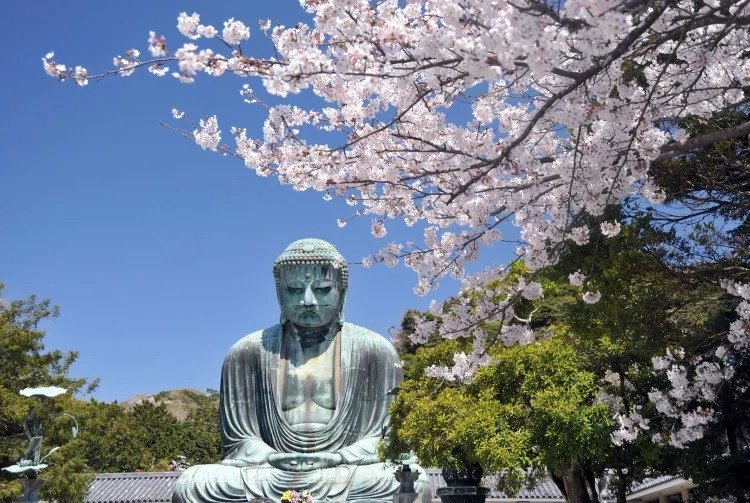
镰仓车站距离 JR 横须贺线上的 东京车站 55 分车程。从镰仓车站出发,很多景点都在步行距离以内。其他景点则通过铁路和单轨铁路连接。
镰仓的地标是高德院内建于 13 世纪、高约 11 米(不包括基座)的阿弥陀佛青铜像。镰仓大佛原本坐落在巨大的木制大殿内,多年来因台风和地震而遭到损坏,并于江户时代 (1603-1868) 进行了修复。如今,镰仓大佛已成为镰仓最热门的景点,也是日本第二大坐佛像。
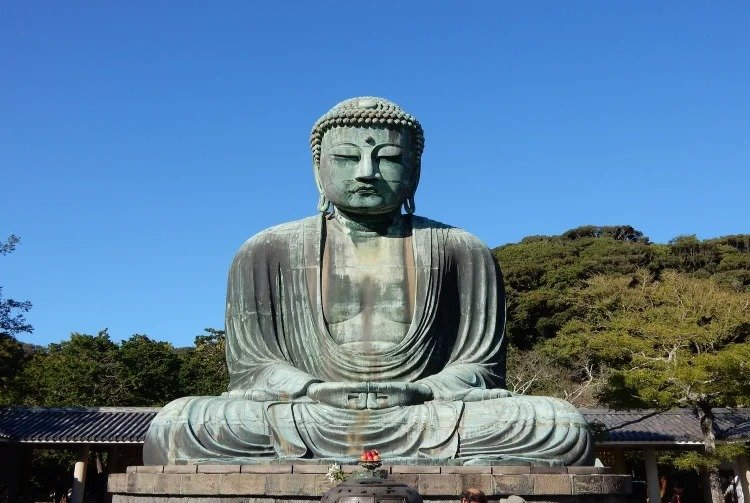
鹤冈八幡宫 位于镰仓的心脏地带,也是这座城市发展的中心。1180 年,建立镰仓幕府的源赖朝将神社从由比滨移至现址,为鹤冈八幡宫奠定了基础。如今,这座神社已成为许多游客的热门目的地。
这里全年举办各种活动,包括祭典、婚礼和展览。它还因春季和秋季的流镝马而闻名。除了美丽的池塘和花园外,寺庙还拥有许多国宝。通往神社的道路上设有出售糖果和其他美食的小吃摊。从镰仓站沿着绿树成荫的迷人道路步行约 10 分钟即可到达。
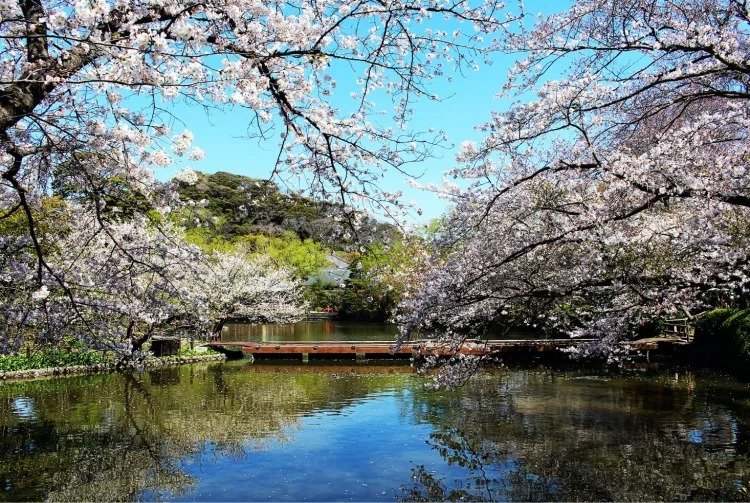
镰仓还有许多其他的寺庙和神社,其中长谷寺靠近大海和 镰仓大佛 ,内有一个美丽的庭院。记得一定要去游览 钱洗辨财天宇贺福神社 ,在那里,您可以用神圣的泉水清洗自己的钱币,并祈求获得更多财富。
另外还有 圆觉寺 、 净智寺 、 建长寺 等寺庙。它们合称为“镰仓五山”,是著名的禅宗佛教寺庙。这些寺庙都非常适合漫步闲逛。
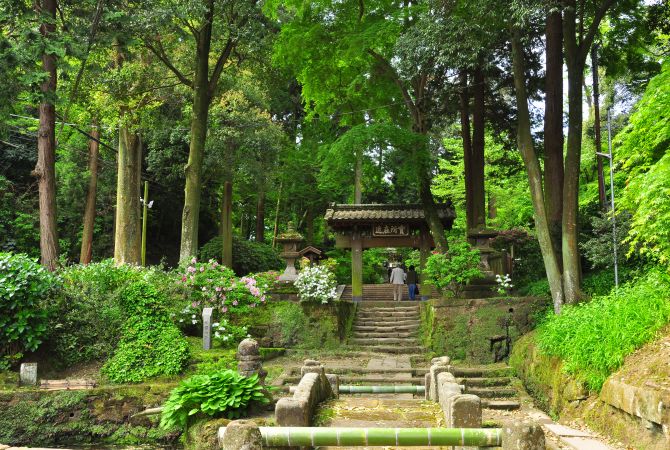
明月院 、 安养院 和 安国论寺 以盛开的美丽花朵而闻名,而 东庆寺 被认为是日本封建时期 600 年间仅有的两座妇女可以逃离丈夫并离婚的寺庙之一。报国寺的竹子非常有名,在竹林中品一杯绿茶,这将是场不错的冥想体验。
镰仓和叶山町近代美术馆
这是日本第一家公共现代美术馆,分立两地:镰仓和叶山。镰仓别馆位于 鹤冈八幡宫 附近,而叶山别馆则需要往南乘坐一小段巴士才能到达。美术馆每年举办四到五次展览,因此,在参观之前请先在网站上查看展览时间表。
镰仓祭和鹤冈八幡宫例大祭
两个节日都以鹤冈八幡宫为中心。四月举行的镰仓祭是为期一周的盛事,有歌舞和传统表演。九月举行的 例大祭 是武士马背射箭术的庆典。在节日期间,这座城市会变得非常拥挤,但仍然值得列入您的行程当中。*请注意,活动详情可能会因新冠疫情而发生变化。
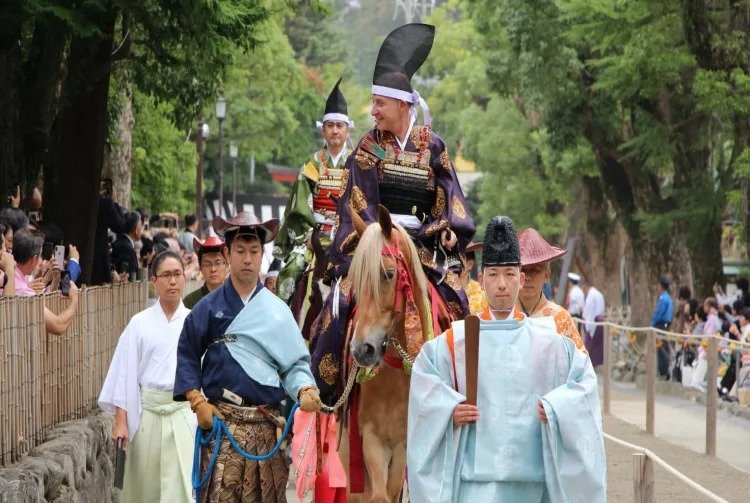
该区域与通往 鹤冈八幡宫 的道路平行,两侧有各种商店、传统餐厅、时尚咖啡馆、糖果店、纪念品商店与高档和服店。
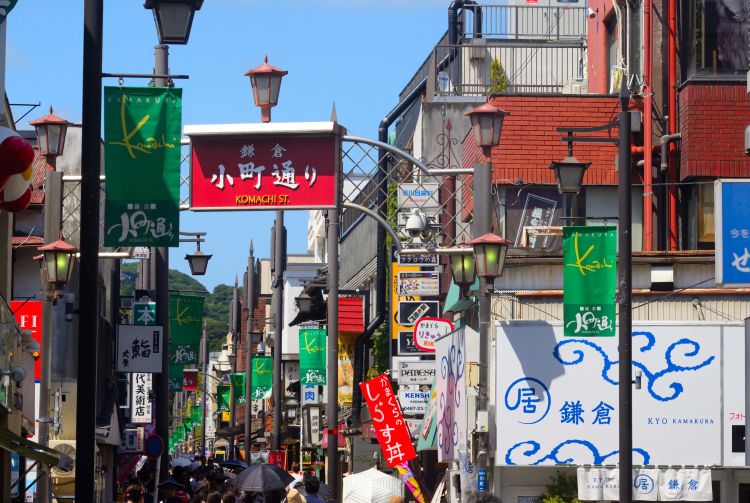
江之岛 长期以来一直是东京的热门一日游景点。从江之岛展望灯台可以全方位欣赏包括富士山在内的江之岛全景。岛上有著名的裸弁财天——妙音弁财天,其为日本“三大弁财天”之一,受到许多人的崇拜。
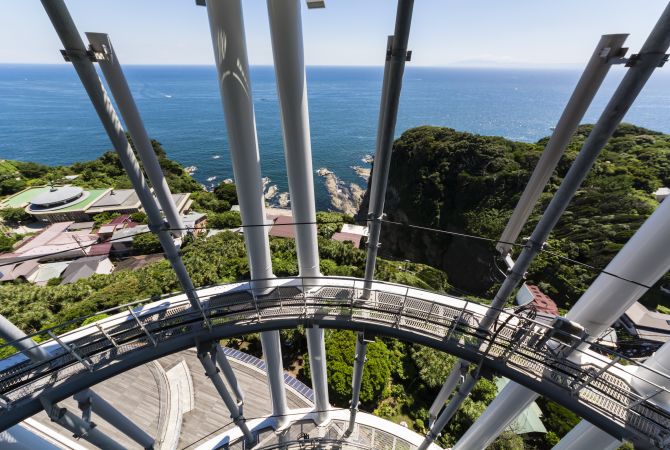
镰仓海岸分为五大区域,包括由比滨、材木座和腰越。夏季,该地区挤满了前来享受大海、阳光、冲浪和新鲜海鲜的游客。夏季几个月,海滩上还会开设餐馆和咖啡店。
人们经常将这里的生活方式与南加州的海滩相提并论,尤其是在 50 年代、60 年代和 70 年代随着流行音乐而发展和繁荣起来的冲浪社区。
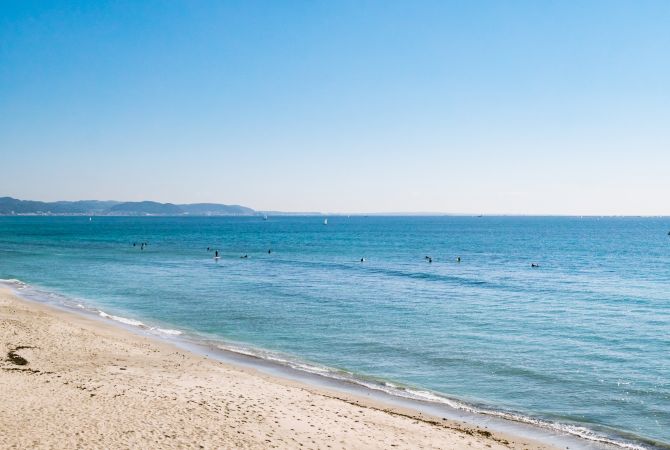
镰仓地区一日游会非常充实,因为这里的景点数不胜数,因此,强烈建议您在此住宿,多游览几日。
Related Links

Kamakura City Tourist Association
- Clear selection
The current display will be printed.
Kamakura and Yokohama: two escapes south of Tokyo

May 9, 2017 • 6 min read
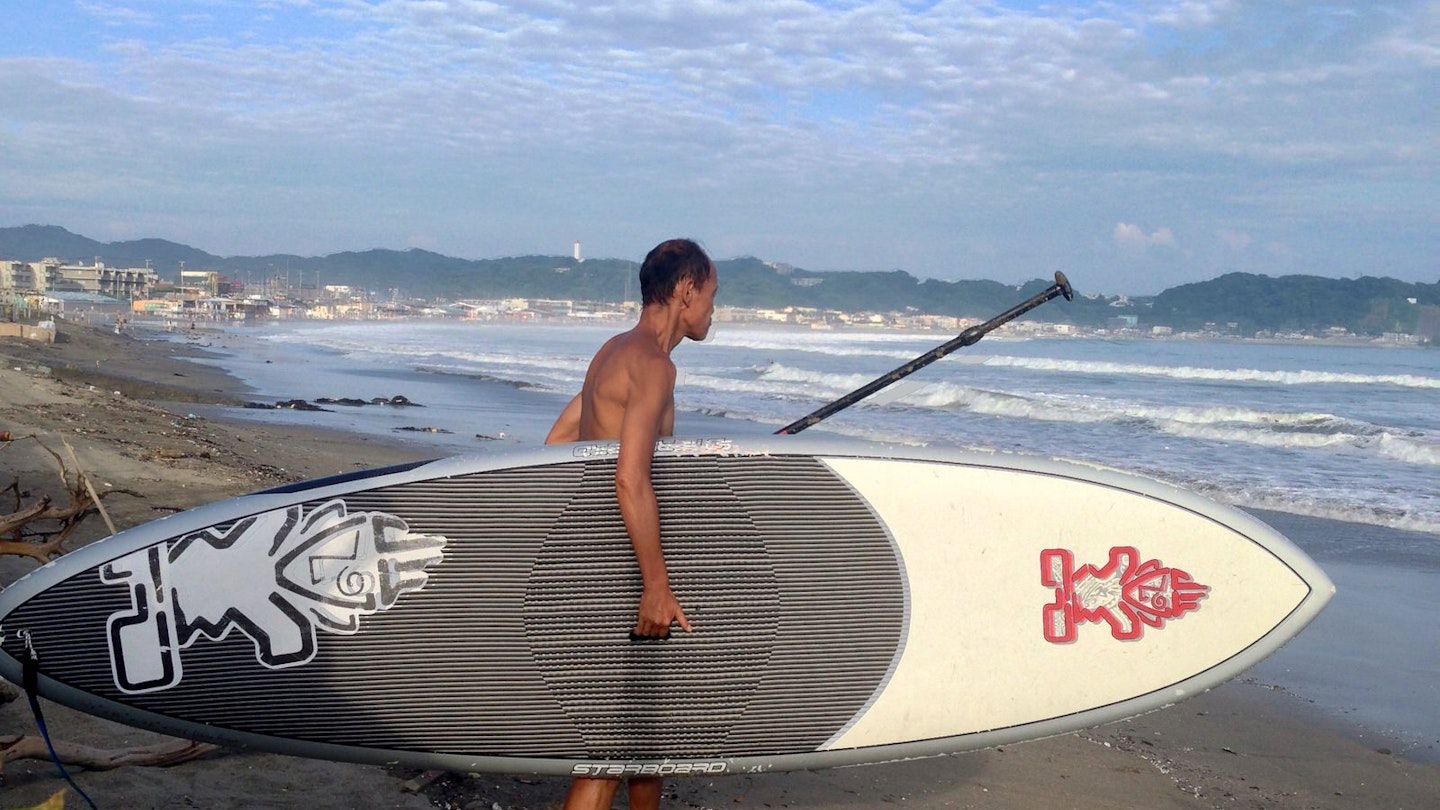
Tokyo is dazzling, frenetic and fashionably cool, but there are times when the population crush and non-stop energy turns this urban paradise into a pressure cooker. An easy escape is to head for the seaside in Kamakura and Yokohama, both easy day trips south of Tokyo.

Today known for its relaxed vibe and surf scene, Kamakura once served as Japan's capital (from 1185 to 1333). Venerable Buddhist temples and Shintō shrines nestle amid the verdant hills that surround the town, offering the opportunity for easy hikes followed by foodie shopping and an outdoor hot-spring dip.
Giant Buddha and surfboards
From Kamakura Station, the old-fashioned Enoden line trains rattle three stops past suburban houses to Hase, location of Kamakura’s most famous sight: the iconic Daibutsu . This 11.4m bronze statue of Amida Buddha, framed by forested hills and open sky, gazes serenely out to sea from his stone pedestal in the grounds of the 13th-century temple Kōtoku-in.
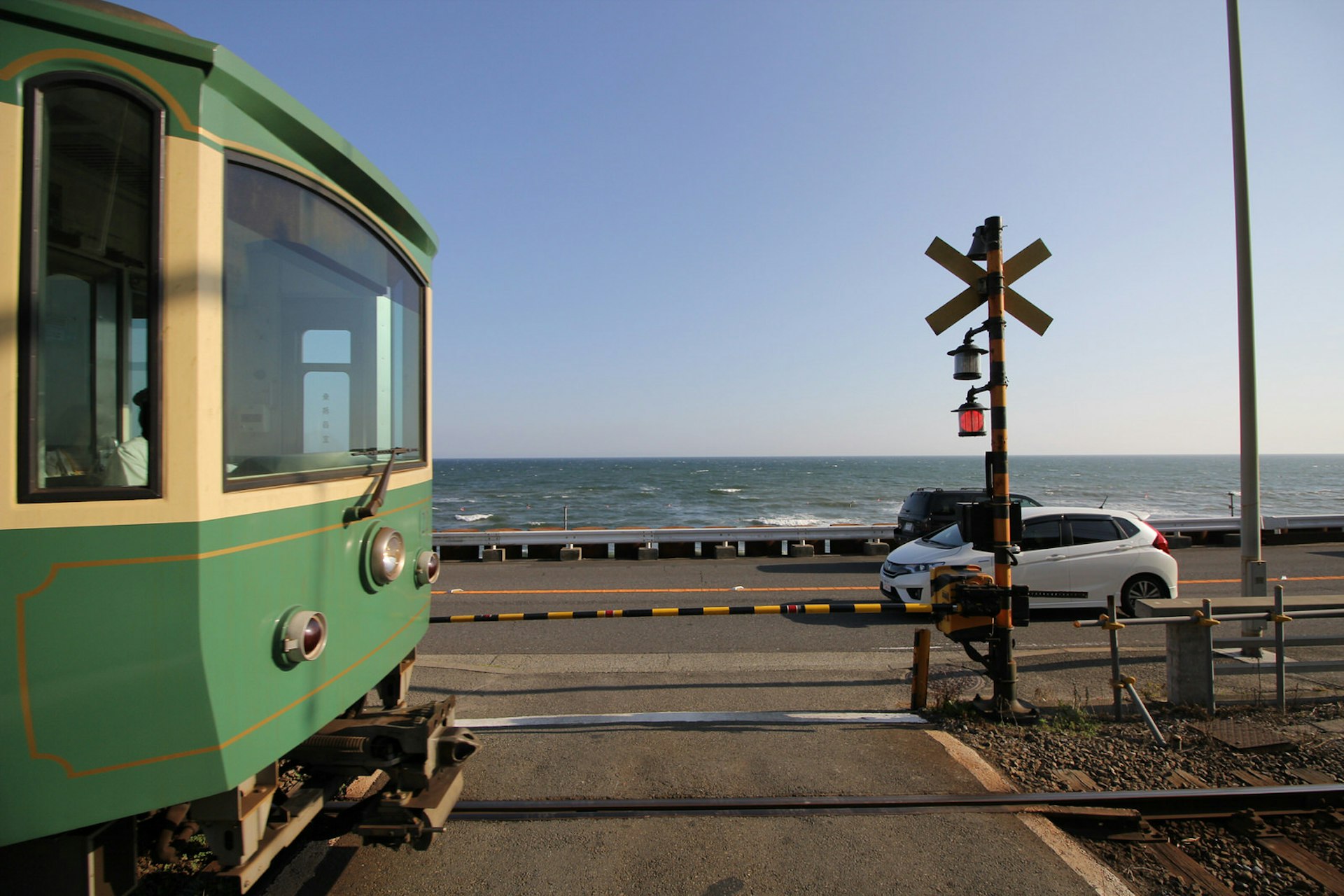
It’s worth lingering in Hase – its quaint streets lined with minka (old wooden houses) are a pleasure to explore. Some of the houses, such as Ichigeya ( ichigeya-en.com ), have been turned into attractive cafes and gift shops. The hillside terraces and gardens of Hase-dera provide wonderful views of the bay and the surrounding hills. Pad along Yuigahama beach, off which surfers ride the gentle waves, or hop on a board yourself. There are plenty of places to rent equipment, with the folks at the backpackers IZA Kamakura , or the surfer-favourite burger shack Good Mellows , able to clue you into scene.
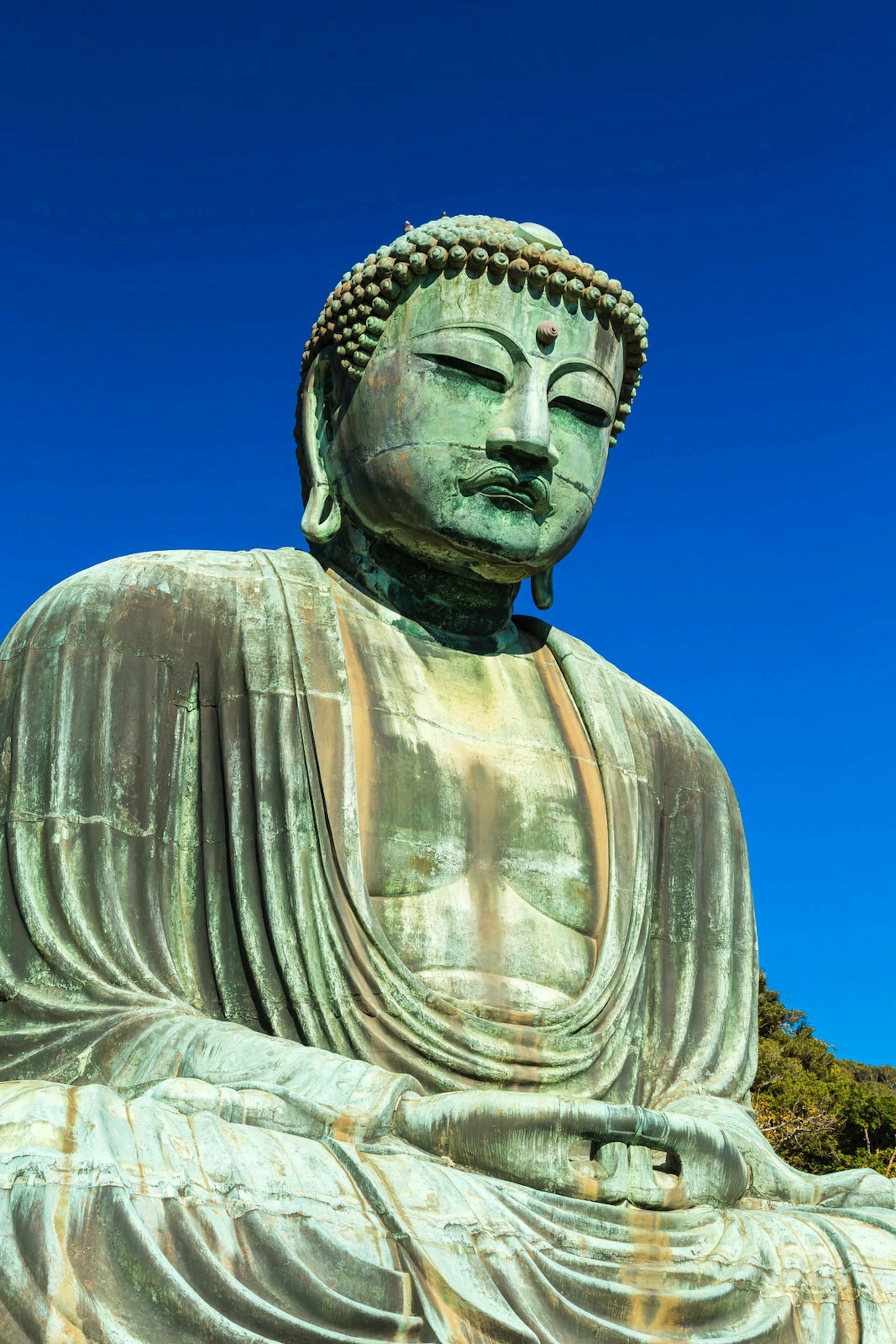
Hillside hiking
Starting a short distance from the grounds of Kōtoku-in, the Daibutsu Hiking Course is a 3km trail that leads up into the hills to connect with Kita-Kamakura. It's an easy and shaded route and along the way you can pause at the lovely Itsuki Garden ( itsuki-garden.com ), a cafe with multiple brick terraces swathed in forest greenery. Near the Kamakura end of the trail, follow the signs to Zeniarai-benten , a cave shrine dedicated to Benten, the goddess of good fortune. Join locals here in the ritual of placing your money into a bamboo basket and giving it a wash in the spring water ( zeniarai translates as ‘coin washing’), said to bring on financial success.
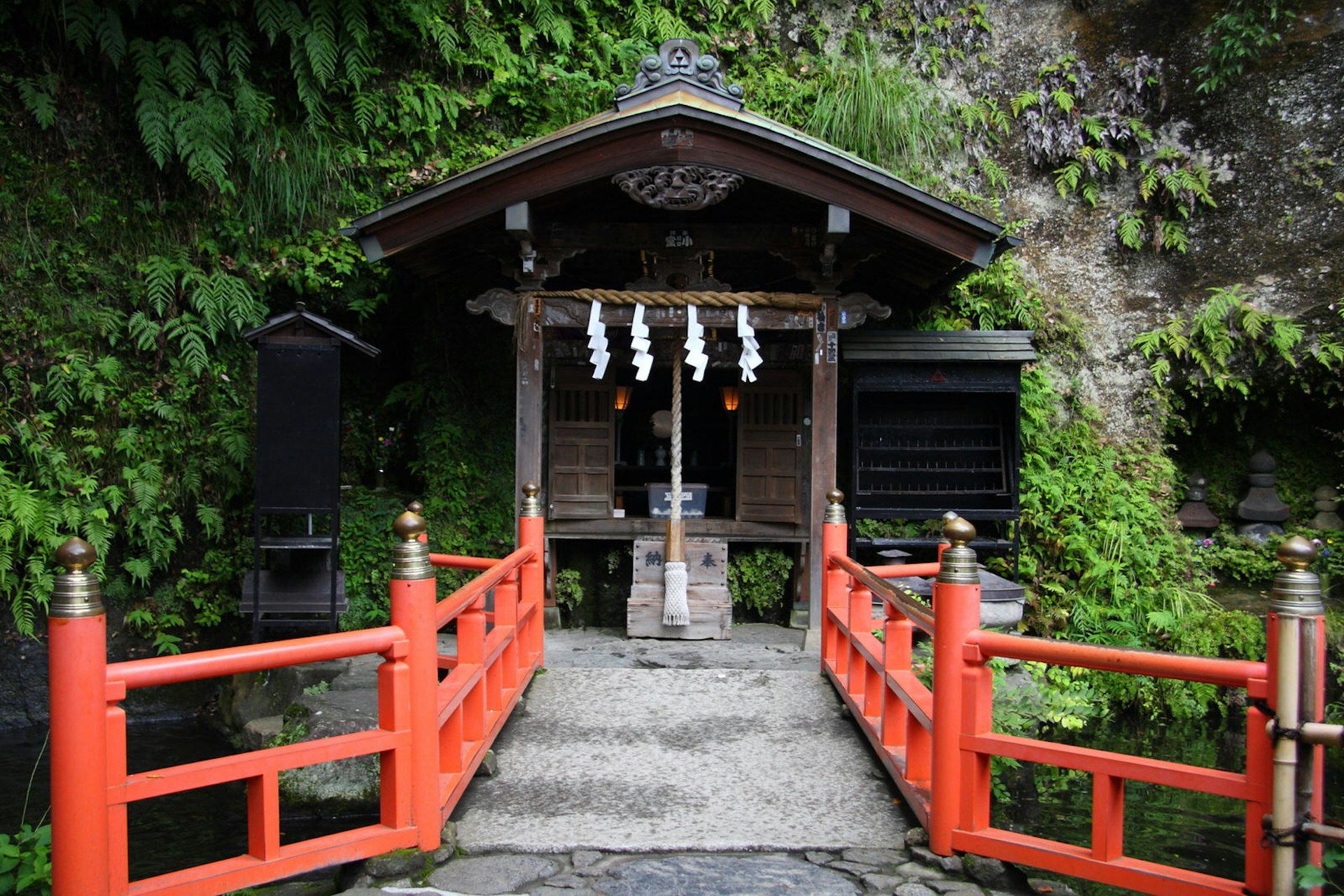
Shopping and local eats
Flush with the thought of extra cash, indulge in some retail therapy along the lively shopping street Komachi-dōri, which runs from Kamakura Station towards the historic shrine Tsurugaoka Hachiman-gū . Among the souvenirs to look out for are Hato Sable , dove-shaped butter cookies sold by Toshimaya; and freshly made sembei (rice crackers) at Kamakura Ichibanya . For tasty breads and baked goods, search out hippy-trippy Paradise Alley Bread & Co ( cafecactus5139.com/paradisealley ) in the daily Kamakura Farmers Market, a 10-minute walk south of the station towards the beach. Continue in this direction and then north to locate the rustic restaurant Bonzō . Such is the quality of its handmade soba (buckwheat noodles), the restaurant has been awarded a Michelin star.

Soak under the stars
Having hiked and eaten your way around Kamakura, hop back on the Enoden line to Inamuragasaki. A three minute walk from the station, facing the beach, is Inamuragasaki Onsen ( inamuragasaki-onsen.com ), where the soothing spa waters are coloured black with minerals. For ¥1400 you can blissfully relax in a giant rotemburo (open-air bath) while gazing up at the starry skies.
Yokohama is Japan's second largest city, with a soothing bayside location, historic and contemporary architecture, interesting museums, and a booming craft beer industry. It is also home to the art festival Yokohama Triennale, in town again in 2017.
Art and architecture
'Islands, Constellations and Galapagos' is the theme for 2017's Yokohama Triennale ( yokohamatriennale.jp/2017 ). This contemporary art fest runs for three months from 4 August, providing a boost to the city's already vibrant creative scene. Two of the major venues hosting shows during the Triennale are Yokohoma Museum of Art and BankART Studio NYK , both of which are wonderful galleries worth visiting at any time of year.

BankART Studio NYK occupies what was once the warehouse of the NYK shipping line and is typical of the way older pieces of architecture across Yokohama's port area have been adapted for modern use. A short walk away is Minato Mirai 21. With a name meaning 'port future', this area is a bold combination of contemporary and older buildings: the 296m-tall Landmark Tower and the award-winning Ōsanbashi International Passenger Terminal , a graceful promenade designed to reflect the ripples of ocean waves, sit alongside weathered red-brick Akarenga Sōkō ( yokohama-akarenga.jp ), a series of 19th-century warehouses transformed into a modern shopping mall.

Quirky museums
Minato Mirai 21 is also the location of a couple of fun museums that will particularly appeal if you're travelling with kids or are playful at heart. The Cup Noodles Museum is an imaginatively designed shrine to the inventor of the instant noodle and the Cup Noodle, Momofuku Ando. The place is popular so arrive early to bag a slot to create a Cup Noodle with your own design of packaging and ingredients.
Another delight is the Hara Model Railway Museum . Displayed here are items from the 6000-piece collection of model trains and railway memorabilia accumulated by Hara Nobutaro, a development engineer, over 80-plus years. The highlight is Ichiban Tetsumo Park, a 30m by 10m diorama that is every kid's dream train set, with over 450m of track and beautifully detailed models. Children can even play at being the chief operator of the trains.
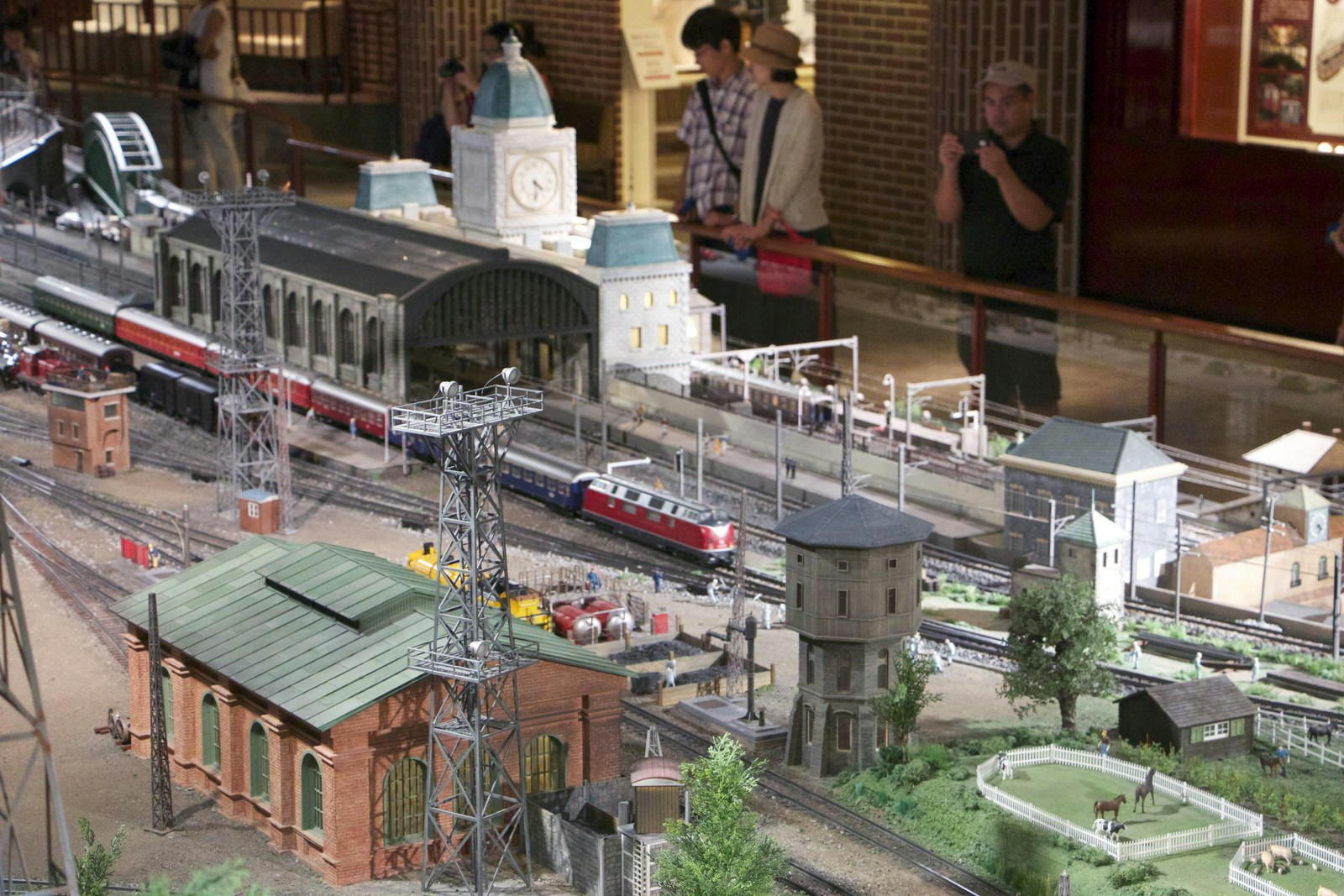
Diverse neighbourhoods
There are several other distinct districts to explore around Yokohama.
Yokohama was one of the first ports in Japan to open to international trade (1859), becoming a major gateway for foreign influence. Among the early arrivals were Chinese traders, eventually leading to the establishment of what became Japan’s first and largest Chinatown. The area is a 500 sq metre enclave marked by five brightly decorated 'Pailou' gateways, with red and gold lanterns dangling over narrow lanes lined with over 500 restaurants. A good one to try is Manchinrō Honten , which has been serving up tasty dim sum for over 100 years.
Motomachi-Yamate, meanwhile, offers a chic shopping street overlooked by a wooded bluff where several vintage European-style residences have been preserved. This is where some of the first foreigners took up residence in the city in the late 19th century. Alight at Motomachi-Chūkagai metro station for either Chinatown or Motomachi-Yamate.

Around 2km southwest of Minato Mirai 21, the once red-light district of Koganechō is now populated by young creatives and entrepreneurs who have transformed beneath-the-train-tracks commercial spaces into compact art studios, galleries, shops, cafes and bars. The annual art festival Koganechō Bazaar ( koganecho.net ) is a free exhibition of street art across the area.
Celebrating craft beer
Raise your glasses for Yokohama's enthusiastic embrace of beer. The city is stacked with microbreweries, such as Bashamichi Taproom and Yokohama Brewery , as well as several other bars, big and small, specialising in quality craft ales from across Japan. Mark your calendars for two annual beer-related events in the city: the Great Japan Beer Festival ( beertaster.org ) in September, and the Yokohama Oktoberfest held in the Akarenga Sōkō in early October, which features copious quaffing of some 130 different ales.
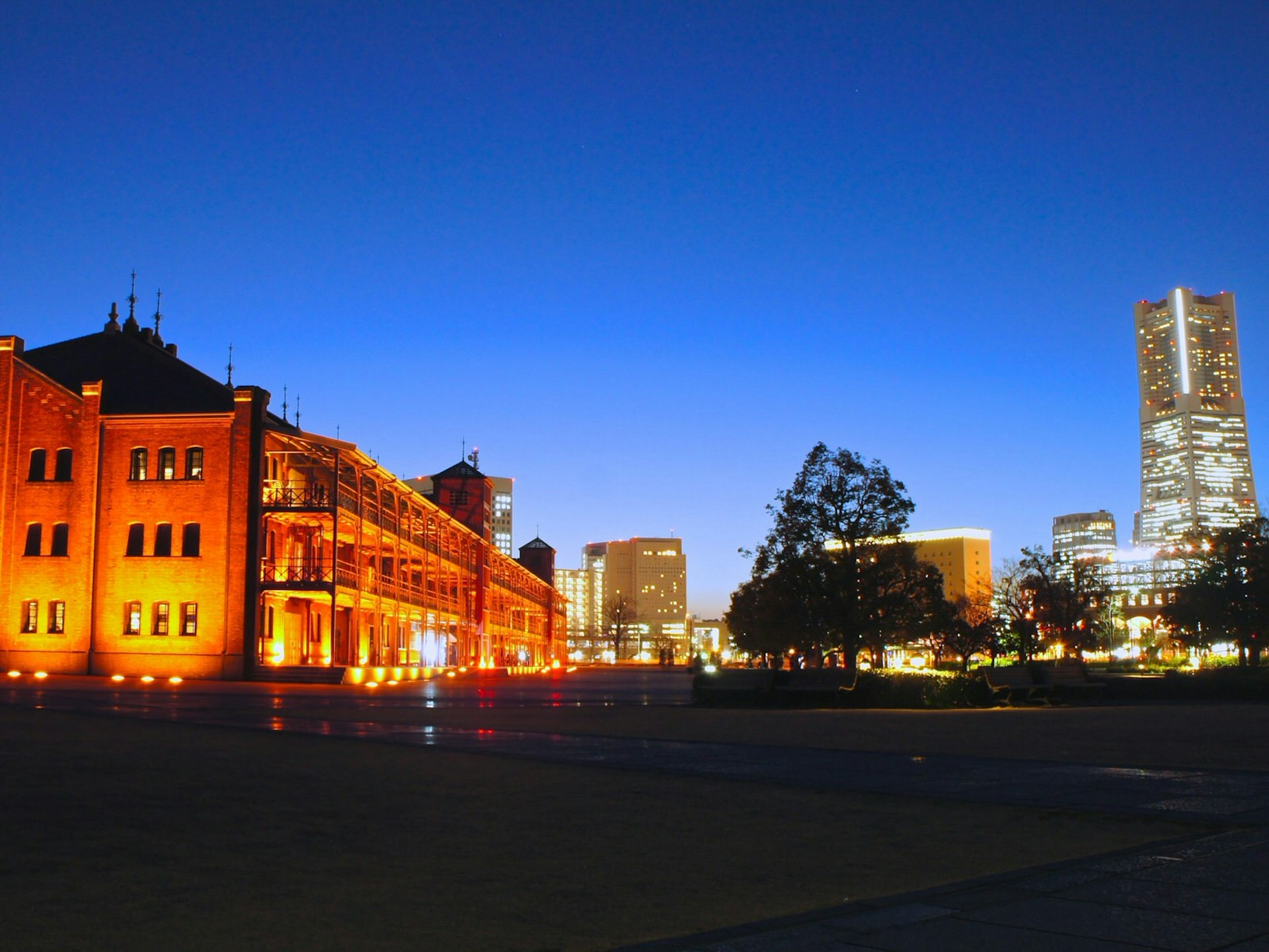
Make it happen
JR Yokosuka–line trains run to Kamakura from Tokyo (¥920, 56 minutes) via Yokohama (¥340, 27 minutes). Alternatively, the Shōnan Shinjuku line runs from the west side of Tokyo (Shibuya, Shinjuku and Ikebukuro, all ¥920) in about one hour, though some trains require a transfer at Ōfuna, one stop before Kita-Kamakura. For more planning and events information, check out Yokohama Official Visitors' Guide ( yokohamajapan.com ) and Kamakura City Tourism Association ( kamakura-info.jp ).
Explore related stories
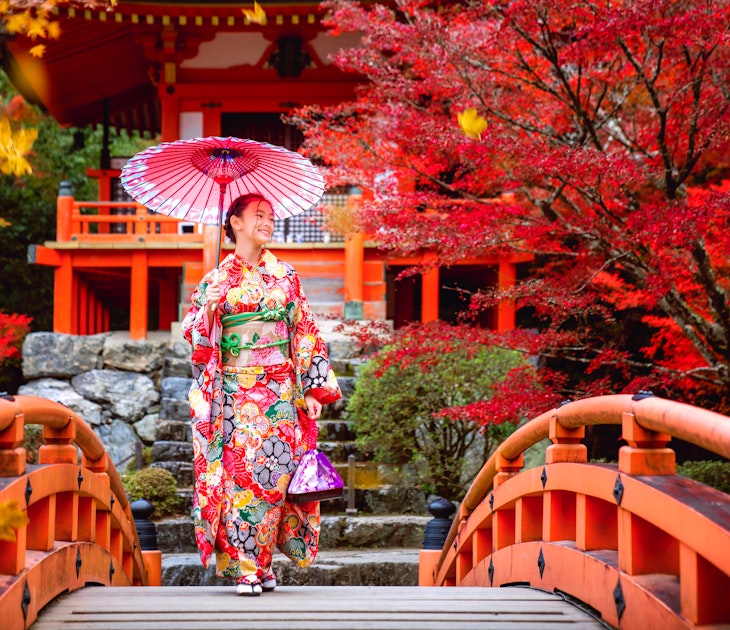
Festivals & Events
Mar 26, 2024 • 8 min read
Japan's seasons offer an incredible range of natural and cultural wonders that draw huge numbers of visitors. Here's how to pick the perfect time for you.

Mar 23, 2024 • 17 min read
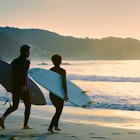
Mar 22, 2024 • 5 min read

Nov 27, 2023 • 7 min read

Sep 2, 2022 • 6 min read
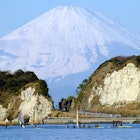
Apr 19, 2022 • 5 min read
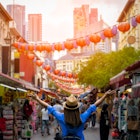
May 5, 2021 • 6 min read
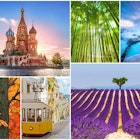
Nov 24, 2020 • 4 min read

Aug 27, 2020 • 7 min read
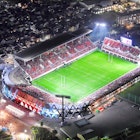
Sep 2, 2019 • 5 min read
Skip to content
Your browser does not support JavaScript, or it is disabled.Please check the site policy for more information.
National Report
- Korean Peninsula
- Around Asia
- Manga & Anime
The Asahi Shimbun
Kamakura steps up guards as tourists to anime site increase
By FUMIKO YOSHIGAKI/ Staff Writer
September 19, 2023 at 19:12 JST

KAMAKURA, Kanagawa Prefecture--In the late afternoon one weekday in early September, dozens of tourists crowded around a railway crossing here, a pilgrimage site for fans of the popular basketball manga “Slam Dunk.”
When the alarm rang and the crossing gate descended, many excited fans turned their smartphones and cameras to capture an oncoming retro-looking Enoshima Electric Railway Co. train against the backdrop of Sagami Bay.
A security guard warned two female foreign tourists against crossing the street, forming an X with his hands for a firm “no.” Speaking loudly, he cautioned people against stepping off the sidewalk or stopping to loiter in narrow spots.
Kamakura is one of many travel destinations grappling with a sudden surge of over-tourism as the number of foreign visitors rebounds following the lifting of coronavirus restrictions.
Kamakura Police Station received 124 reports related to the crossing in the first eight months of this year, compared with 18 reports in all of 2022.
Many are complaints about congestion in the area and nuisance from parked vehicles.
Starting in September, the Kamakura city government put a security guard at the crossing between 10 a.m. and 6 p.m. on weekdays, sharing expenses with Enoshima Electric Railway. Previously, a security guard was only posted on weekends.
The crossing appears at the beginning of the “Slam Dunk” anime, based on the manga of the same title, which is popular in South Korea, China and other Asian countries as well as in Japan.
Visitors have apparently risen following the December opening of the film “The First Slam Dunk," which has raked in 15.7 billion yen ($106 million) at the box office.
“Things have been more or less the same for the past five years or so,” a 51-year-old local resident said. “The number of visitors appeared to have fallen a little due to the coronavirus, but it recently began increasing again.”
He said visitors sometimes block traffic by straying into the streets, and some enter apartment complexes or school grounds without authorization.
About 20 million people visited Kamakura annually before the pandemic. The number declined to a record-low 6.56 million in 2021 but recovered to 11.96 million last year.
The city is again facing problems of over-tourism, such as congestion of public transportation, littering and photographing on streets.
The city and its tourism association have posted a map online showing the degree of congestion at major sightseeing spots to lead visitors to less-crowded areas.
They have also included cautions about photographing, eating while walking and other subjects in sightseeing leaflets in six languages, accompanied by illustrations.
CROWDS ABOUND
Kamakura is not the only place in Japan facing a resurgence of over-tourism, and the central government has taken notice.
In September, related ministries and agencies, such as the Japan Tourism Agency, started discussions to study measures to prevent problems in advance.
Tourist destinations have also taken their own responses.
The Kyoto city tourism association is live-streaming images of 10 locations, including Kyoto Station and urban areas, and showing the forecast for congestion at sightseeing spots on its website.
The association is also recommending that tourists visit sightseeing sites in the morning and evening when they are less crowded.
In Shirakawa-go, a World Heritage site in Gifu Prefecture featuring traditional “gassho-zukuri” steep-roofed thatched farmhouses, problems such as littering and congestion due to parked vehicles have become serious.
Next year, the tourist association there will introduce an admission ticket system for visitors to its annual light-up event from January to February, in addition to the existing advance booking system.
The association said this measure is necessary to protect residents’ lives and enable visitors to enjoy the event by controlling tourist numbers.
In Iriomotejima island, a World Heritage site in Okinawa Prefecture, local authorities have set the ceiling for tourist numbers at 330,000 annually and 1,200 a day by taking into account the impact of tourism on the natural environment and residents’ lives.
Local government officials spread the timing of group tours and school trips in coordination with tourist agencies and shipping companies.
Related News

Naruhito tours ancient Buddhist temple as part of Indonesia visit

Miyajima island ferry fees to rise with new visitor tax of 100 yen

Activist comes to the rescue of Kyoto over tourist woes

With tourism down, Kyoto pulls menacing signs on manners

Check out these Kyoto tours before everybody else joins them

Photos banned in Kyoto’s Gion after tourists harass geisha
Trending Now

Cormorant fishing season starts with a splash in Ehime
June 5, 2024

GSDF sergeant killed in drill on grenade throws in Yamanashi
May 31, 2024

Rainfall records broken across Japan; man dies in Yamanashi
May 29, 2024
Recommended

Stories about memories of cherry blossoms solicited from readers

Cooking experts, chefs and others involved in the field of food introduce their special recipes intertwined with their paths in life.

A series based on diplomatic documents declassified by Japan’s Foreign Ministry

A series on the death of a Japanese woman that sparked a debate about criminal justice policy in the United States

A series about Japanese-Americans and their memories of World War II

Here is a collection of first-hand accounts by “hibakusha” atomic bomb survivors.
Learning English
- Asahi Weekly
In-house News and Messages
- The New York Times
BACK TO TOP
- Site Policy
- Transmission of user information to external service providers(利用者情報の外部送信)
Copyright © The Asahi Shimbun Company. All rights reserved. No reproduction or republication without written permission.
- Media & Industry
- Meetings & Events
- เลือกภาษา 简体中文 繁體中文(香港) 繁體中文(臺灣) India (English) Bahasa Indonesia 한국어 ภาษาไทย Tiếng Việt Singapore (English) Philippines (English) Malaysia (English) Australia/New Zealand (English) Français Deutsch Italiano Español United Kingdom (English) Nordic countries(English) Canada (English) Canada (Français) United States (English) Mexico (español) Português العربية Japan(日本語) Global (English)
- India (English)
- Bahasa Indonesia
- Singapore (English)
- Philippines (English)
- Malaysia (English)
- Australia/New Zealand (English)
- United Kingdom (English)
- Nordic countries(English)
- Canada (English)
- Canada (Français)
- United States (English)
- Mexico (español)
- Global (English)
- ซัปโปโรและพื้นที่โดยรอบ
- อะซะฮิคะวะและฮอกไกโดตอนเหนือ
- ฮาโกะดาเตะและฮอกไกโดตอนใต้
- คุชิโระและฮอกไกโดทางตะวันออก
- อะโอโมริและพื้นที่โดยรอบ
- ทสึรุกะโอกะและซะคะตะ
- นะงะโนะและพื้นที่โดยรอบ
- มัตสึโมะโตะ
- ไซตะมะนิวเออร์เบินเซ็นเตอร์
- อุทสึโนะมิยะ
- มาเอะบาชิและอะกากิ
- ใจกลางเมืองนาโกย่า
- ภูเขาไฟฟูจิ (ยามานาชิ)
- กิฟุและพื้นที่โดยรอบ
- ฮิดะ ทะคะยะมะ
- เขตพื้นที่อ่าวโอซาก้า
- พื้นที่โดยรอบสถานีเกียวโต
- เมืองฮิโรชิมะ
- เมืองโอคะยะมะ
- เมืองทตโตริและพื้นที่โดยรอบ
- ชิโมะโนะเซะกิ
- เบปปุ & ยุฟุอิน
- เกาะอิชิงะคิ
- เกาะมิยาโกะ
- เกาะเคะระมะ
- คู่มือเที่ยวภูเขาไฟฟูจิ
- หมู่เกาะโตเกียว
- ซาโอและพื้นที่โดยรอบ
- เจแปน แอลป์
- ทะเลสาบโทวะดะและพื้นที่โดยรอบ
- นิเซะโกะสกีรีสอร์ทและพื้นที่โดยรอบ
- เมืองนะงะโนะและพื้นที่โดยรอบ
- จุดเล่นกีฬาโต้คลื่นในมิยะซะกิ
- ใจกลางเกียวโต
- โคคะและชิกะระคิ
- เมืองฟุคุโอกะ
- โดทงโบริและชินไซบะชิ
- กินซ่าและนิฮงบาชิ
- เกาะต่างๆที่เซะโตะอุจิ
- คิโยซาโตะและโฮคุโตะ
- รปปงงิและอาคาซาคะ
- กินซังอนเซ็น
- เกาะต่างๆที่นางาซากิ
- เมืองเซ็นได
- ปราสาทโอซาก้าและพื้นที่โดยรอบ
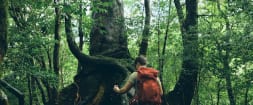
- คุมะโนะโคโด
- เมืองฟุคุอิ
- อุทยานชิโกะกุคาสต์
- เบปปุอนเซ็น
- ฮาโกเนะยุโมโตะอนเซ็น
- คุซัทสึอนเซ็น
- คิโนะซะกิอนเซ็น
- ฮะจิมันไต อนเซ็น
- โอมิฮะจิมัง
- ไอซุวะกะมัทสึและโอเซะ
- ชิเระโทะโกะ
- ฮะจิมันไตและพื้นที่โดยรอบ
- ชิราคามิและโอดาเตะ
- การดำน้ำในญี่ปุ่น
- การเล่นสกีในญี่ปุ่น
- ดอกไม้ตามฤดูกาลตลอดทั้งปีของญี่ปุ่น
- การผจญภัยกลางแจ้งที่ยิ่งใหญ่
- เส้นทางที่ยังไม่เป็นที่รู้จักในญี่ปุ่น
- แหล่งมรดกโลก
- การพักแรมในชนบทของญี่ปุ่น

- สวนแบบญี่ปุ่นและสวนแบบเซ็นทั่วประเทศญี่ปุ่น
- พบกับงานฝีมือแบบดั้งเดิมและเวิร์คช็อป
- การพักแรมในวัด
- เทศกาลและกิจกรรมต่างๆของญี่ปุ่น
- โรงละครในญี่ปุ่น
- พิธีชงชาแบบญี่ปุ่น
- ประสบการณ์ทางวัฒนธรรมในญี่ปุ่น
- วัฒนธรรมในญี่ปุ่น
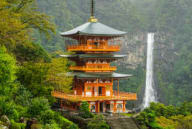
- อาหารท้องถิ่นของญี่ปุ่นตะวันออก
- อาหารท้องถิ่นทางตะวันตกของญี่ปุ่น
- อาหารสตรีทฟู้ดท้องถิ่นและร้านอาหารราคาประหยัดในญี่ปุ่น
- สัมผัสประสบการณ์เอคิเบนในแต่ละท้องถิ่นของประเทศญี่ปุ่น
- ยะกิโทริ คู่มือการทานไก่เสียบไม้ที่ถูกปากคุณ
- วิสกี้ญี่ปุ่น
- คู่มืออาหารในญี่ปุ่นสำหรับผู้ทานมังสวิรัติ
- คู่มือแนะนำซูชิในญี่ปุ่น
- สาเกญี่ปุ่นและเครื่องดื่มแอลกอฮอล์
- สาเก 101 คู่มือพื้นฐานเกี่ยวกับสาเกญี่ปุ่น

- พิพิธภัณฑ์ศิลปะ
- สัมผัสกับโลกของสถาปัตยกรรมญี่ปุ่น
- ศิลปะการแสดง
- เทศกาลศิลปะ
- การท่องเที่ยวอะนิเมะ
- เครื่องเซรามิกญี่ปุ่น
- งานฝีมือท้องถิ่น

- ทิวทัศน์สวยงามตอนกลางคืน
- สิ่งมหัศจรรย์ทางธรรมชาติ
- ธีมปาร์คและสวนสนุก
- สถานบันเทิงยามค่ำคืน
- ซามูไรและนินจา
- สถาปัตยกรรมเลื่องชื่อ
- การช้อปปิ้งในญี่ปุ่น

- น้ำพุร้อนในญี่ปุ่น
- การท่องเที่ยวเชิงสุขภาพในญี่ปุ่น
- คู่มือแนะนำเรียวคังญี่ปุ่น
- คำแนะนำสำหรับการดูดาวในญี่ปุ่น
- การผ่อนคลายในญี่ปุ่น
- การอาบป่าในญี่ปุ่น (ชินรินโยคุ)

- ประสบการณ์ในญี่ปุ่น
- เที่ยวญี่ปุ่นมุมใหม่... กิจกรรมสุดประทับใจ

- ข้อมูลวีซ่า
- การเดินทางไปญี่ปุ่น
- การเดินทางเข้าสู่สนามบิน
- คู่มือการช้อปปิ้งในญี่ปุ่น
- การท่องเที่ยวที่เข้าถึงได้
- ธรรมชาติกลางแจ้งอันยิ่งใหญ่ที่ฮอกไกโด
- มรดกโลกแสนสวยในโทโฮคุ
- ธรรมชาติและประเพณีในชิโกะคุ

- ท่องเที่ยวโดยรถไฟ
- วิธีการเดินทางโดยรถไฟและรถบัสในญี่ปุ่น
- บัตรโดยสารรถไฟเจอาร์
- การเดินทางโดยรถไฟชมทิวทัศน์
- รถเช่าในญี่ปุ่น
- ประสบการณ์การท่องเที่ยวอย่างยั่งยืนในประเทศญี่ปุ่น
- เอกสารท่องเที่ยว
- แอพพลิเคชั่นที่มีประโยชน์
- เว็บไซต์สำหรับการจองทางออนไลน์
- ที่พักที่เป็นมิตรต่อระบบนิเวศ
- การเดินทางกับผู้ทุพพลภาพ
- กระเป๋าเดินทางและสถานที่จัดเก็บ
- วิธีการจองมัคคุเทศก์นำเที่ยวที่มีใบอนุญาต
- รายชื่อของอาสาสมัครนำเที่ยว
- เจเอ็นทีโอ ทีไอซี (ศูนย์ข้อมูลสำหรับนักท่องเที่ยว)
- คำถามที่พบบ่อย

- เข้าใจและชำนาญเกี่ยวกับมารยาทและธรรมเนียมปฏิบัติของญี่ปุ่น
- ฤดูใบไม้ผลิในญี่ปุ่น
- ฤดูร้อนในญี่ปุ่น
- ฤดูใบไม้ร่วงในญี่ปุ่น
- ฤดูหนาวในญี่ปุ่น
- ฤดูใบไม้ผลิในญี่ปุ่น: พยากรณ์ดอกซากุระบาน
- การพยากรณ์ใบไม้เปลี่ยนสีปี

- สายด่วนนักท่องเที่ยวในญี่ปุ่น
- ปกป้องตัวคุณเองจากความเสี่ยงที่อาจจะเกิดขึ้นด้วยประกันภัยการท่องเที่ยว
- Japan Safe Travel Information
- กฎระเบียบในท้องที่
- นักท่องเที่ยวมุสลิม
- Safety Tips

- ข้อมูลเที่ยวญี่ปุ่นล่าสุด
- จากองค์กรท่องเที่ยวอื่นๆ / Partners Information
- ประกาศข่าวจัดซื้อจัดจ้าง / Tender notice
- ข้อมูลสำหรับผู้ประกอบธุรกิจท่องเที่ยว
- รูปภาพและวิดีโอโปรโมทประเทศญี่ปุ่น
My Favorites
${v.desc | trunc(25)}
Planning a Trip to Japan?
Share your travel photos with us by hashtagging your images with #visitjapanjp
คะนะงะวะ คามาคุระ สถานที่ทางประวัติศาสตร์ ดอกไม้และใบไม้ตามฤดูกาล และอาหารในเมืองหลวงโบราณ เดินทางได้ง่ายจากโตเกียว
- ใกล้กับ คามาคุระ
- สถานที่ท่องเที่ยวที่น่าสนใจ
©Kamakura City Tourist Association
สถานที่ทางประวัติศาสตร์ ดอกไม้และใบไม้ตามฤดูกาล และอาหารในเมืองหลวงโบราณ เดินทางได้ง่ายจากโตเกียว
คามาคุระอยู่ทางตอนใต้ของโตเกียวโดยใช้เวลาเดินทางไม่เกินหนึ่งชั่วโมง เมืองนี้เคยเป็นเมืองหลวงของประเทศญี่ปุ่นซึ่งมีความสำคัญทางการเมือง อีกทั้งยังขึ้นชื่อในด้านวัดวาอาราม มรดกทางวรรณคดี ชายหาด และเส้นทางเทรลปีนเขา
พระใหญ่แห่งคามาคุระ
- วัดเซ็นบางแห่งที่เก่าแก่ที่สุดและสวยงามเป็นอันดับหนึ่งในประเทศญี่ปุ่น
- พิพิธภัณฑ์ศิลปะสมัยใหม่
- เดินซื้อสินค้าไปตามถนนโคมาจิโดริที่ทอดยาวมาจากสถานีคามาคุระ
- เอโนะชิมะและชายหาดคามาคุระ
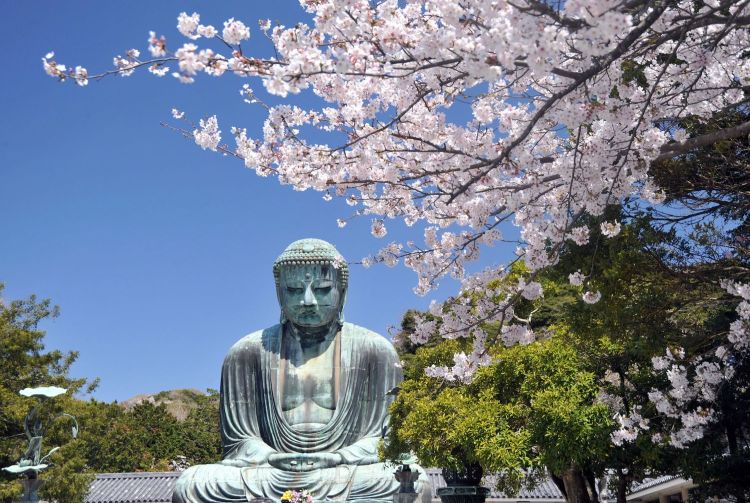
วิธีการเดินทาง
สถานีคามาคุระอยู่ห่างจาก[สถานีโตเกียว] 55 นาที(https://www.japan.travel/en/spot/1710)เมื่อใช้เส้นสถานีเจอาร์คามาคุระ มีสถานที่ท่องเที่ยวมากมายที่สามารถเดินไปได้จากสถานีคามาคุระ บริการรถไฟท้องถิ่นและรถไฟรางเดี่ยวที่เชื่อมต่อสถานที่อื่นๆ
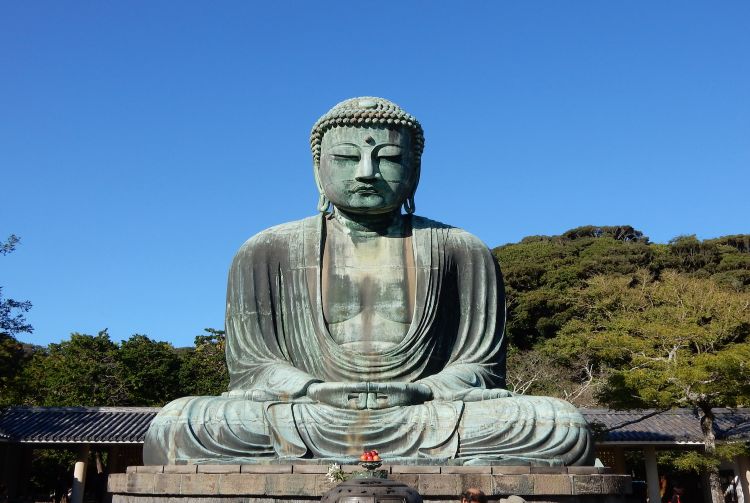
ศาลเจ้าทสึรุกะโอกะฮะชิมังกู
มีการจัดกิจกรรมต่าง ๆ ตลอดทั้งปี ตั้งแต่งานเทศกาลไปยังงานแต่งงาน และนิทรรศการ นอกจากนี้ยังมีชื่อเสียงในเรื่องเทศกาลยาบุมซาเมะ (การยิงธนูบนหลังม้า) ในฤดูใบไม้ผลิและฤดูใบไม้ร่วง นอกจากสระน้ำและสวนที่สวยงามแล้ว วัดแห่งนี้ยังเป็นที่ตั้งของสมบัติของชาติ และมีแผงขายอาหารมากมายที่ขายขนมหวานและขนมอื่นๆตลอดทางไปศาลเจ้า ใช้เวลาเดินประมาณ 10 นาทีจากสถานีคามาคุระไปตามเส้นทางที่มีต้นไม้เรียงรายสวยงาม
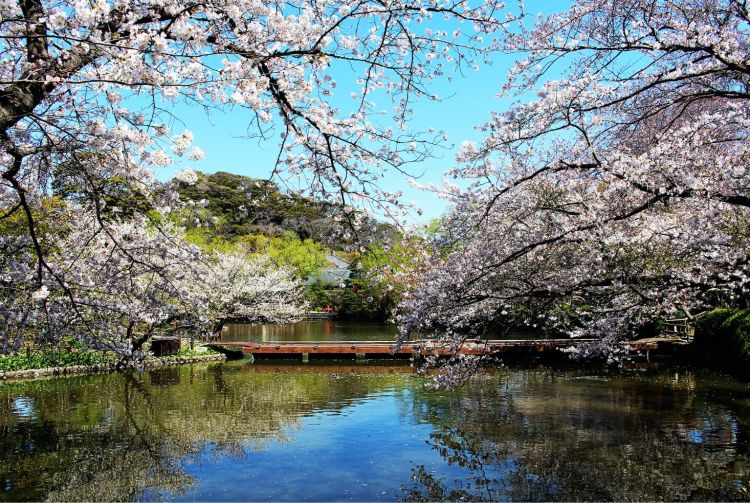
พิพิธภัณฑ์ศิลปะสมัยใหม่คามาคุระและฮายามะ
เทศกาลคามาคุระและเทศกาลทสึรุกะโอกะฮะชิมังกูเรไทไซ, ถนนโคมาจิโดริ.
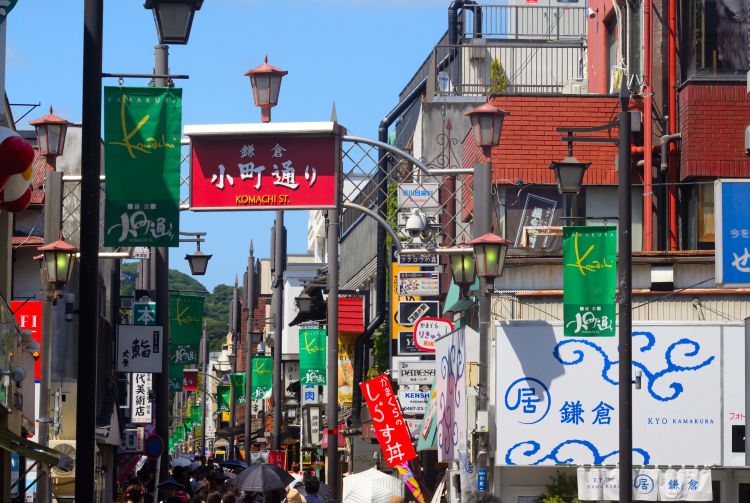
เอโนะชิมะและชายหาดโชนัน
เอโนชิมะเป็นสถานที่ท่องเที่ยวแบบไปเช้าเย็นกลับยอดนิยมของโตเกียวมายาวนาน จากประภาคารเอโนชิมะแคนเดิลคุณสามารถชมทิวทัศน์แบบพาโนรามา 360 องศาของเกาะซึ่งรวมถึงภูเขาไฟฟูจิด้วย เกาะแห่งนี้เป็นที่ตั้งของเบ็นไซเท็น "เปลือย" อันโด่งดัง และเมียว-อน เบ็นไซเท็น หนึ่งใน "เบ็นไซเท็นผู้ยิ่งใหญ่ทั้งสาม" ขซึ่งมีผู้คนมาสักการะมากมาย
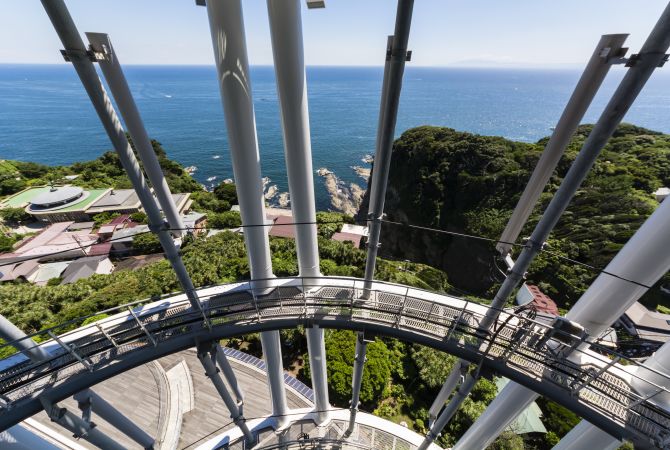
แนวชายฝั่งของคามาคุระมีห้าพื้นที่หลัก ๆ รวมถึง ยุอิงะฮามะ ไซโมคุซะ และคาชิโกเอะ ในฤดูร้อน บริเวณนี้จะเต็มไปด้วยนักท่องเที่ยวที่ต้องการเพลิดเพลินไปกับทะเล แสงแดด โต้คลื่น และอาหารทะเลที่สดใหม
ด้วยวิถีชีวิตของย่านนี้ จึงมักจะถูกเปรียบว่าเป็นเหมือนชายหาดของแคลิฟอร์เนียตอนใต้ โดยเฉพาะวิถีชีวิตของกลุ่มคนเล่นเซิร์ฟและเพลงยอดนิยมที่เติบโตและเฟื่องฟูในช่วงยุค 50 60 ไปจนถึงยุค 70
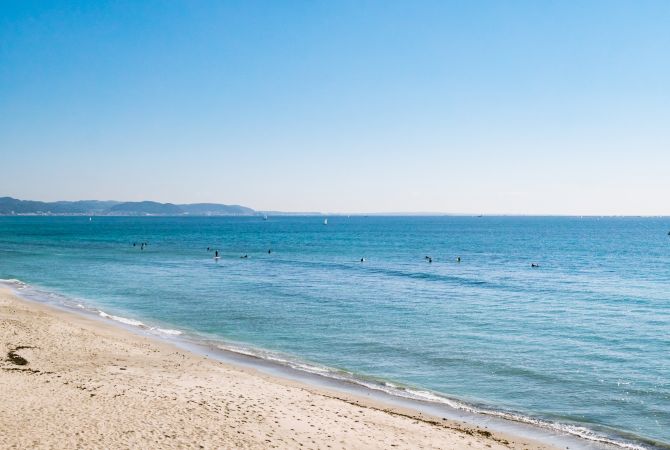
การเที่ยวชมพื้นที่คามาคุระนั้นทำให้หมดวันไปอย่างรวดเร็วซึ่งยังมีสถานที่ให้เที่ยวชมอีกมาก ดังนั้นการพักค้างแรมจึงเหมาะสมอย่างยิ่ง
* ข้อมูลต่างๆ บนเวบไซต์ อาจมีการเปลี่ยนแปลงสืบเนื่องจากสถานการณ์ COVID-19
คำแนะนำสำหรับคุณ
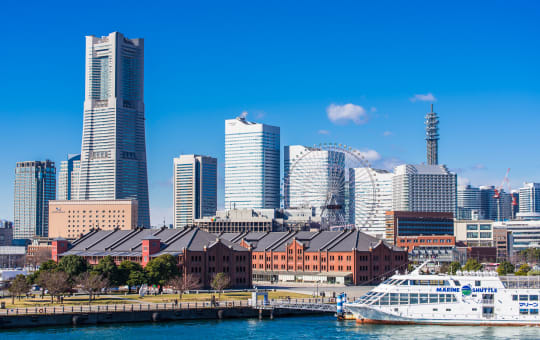
Did this information help you?
out of found this information helpful.
Thank you for your feedback.
ลิงก์อ้างอิง.

Please Choose Your Language
Browse the JNTO site in one of multiple languages

IMAGES
VIDEO
COMMENTS
kamakura city promotional video Back to top Contact Us:18-10, Onarimachi, Kamakura-shi, Kanagawa, 248-8686, Japan Department of Commerce tourism Kamakura city hall civic action unit TEL +81-467-61-3884 FAX +81-467-23-8700
©Kamakura City Tourist Association. Tsurugaoka Hachimangu Shrine. Tsurugaoka Hachimangu is the heart of Kamakura and the spot around which the city developed. In 1180 Minamoto no Yoritomo, who established the Kamakura Shogunate, moved the shrine from Yuigahama Beach to its present location, thus laying the foundation for Tsurugaoka Hachimangu ...
Kamakura City Tourist Association/Kamakura Welcome Guide Association. The nearest station is JR Kamakura Station West Exit. The office is located on the 4th fl. of the Enoden Building. TEL 0467-23-3050 (in Japan) TEL 81-467-23-3050 (from overseas) e-Mail [email protected]. Office Hours: 8:30 to 17:15 (Closed at Year End and New Year) ...
©Kamakura City Tourist Association. Elemental. The statue is 11.3 meters tall and weighs 121 tons. It is a bronze statue of Amida Buddha and is second only in height to Todaiji's Great Buddha in Nara. Like the statue in Nara, the Daibutsu was originally housed inside a temple building after its casting in the 13th century. However, in the 14th ...
Kamakura City Tourist Association/Kamakura Welcome Guide Association The nearest station is JR Kamakura Station West Exit The office is located on the 4th fl. of the Enoden Building. Telephone number: 0467-23-3050 (in Japan),81-467-23-3050 (from overseas) E-mail address:
WeBase Kamakura is a resort hotel and restaurant in the ancient capital of Kamakura, one minute from the Shonan sea and one hour from the city. WeBase Kamakura is a 3 minutes walk from Yuigahama Station and there are many tourist attractions within walking distance, such as the Kamakura Great Buddha, Tsurugaoka Hachimangu Shrine, and Kamakura ...
Description. Kamakura—an ancient capital surrounded by the beautiful beaches and mountains. Just 60 minutes by train from central Tokyo, easy access is one of the reason this city attracts a lot of visitors. A place beloved by both domestic and foreign guests for its refreshing air; historical shrines and temples; and its retro-modern atmosphere.
Kamakura City Tourist Association. Kamakura City Tourist Association. Business Hours:8:30 a.m.-5:15 p.m. TEL:0467-23-3050; Next to the West Exit of Kamakura Station, JR Yokosuka Line/Enoshima Electric Railway; Google Maps; Languages Available Speaking【Japanese, English】 ...
Detailed information for Tourist Information Centers Kamakura City Tourist Association located in the Kamakura area.We are providing useful information of sightseeing in Kamakura City. To help ensure all the visitors spend a great time in the city, we also provide luggage keeping services and sell Kamakura original goods as well.
If your Japanese is good, avoid such a scenario by calling in advance using the phone number provided by the Kamakura City Tourist Association (0467-22-6607). Highlights of the downtown area. The plum blossoms (mid-February), bush clover (late-September) and other seasonal flowers at Hokai-ji;
Zazen experience at 3 temples in Kamakura and Kita-Kamakura 1) Hokokuji Temple Every Sunday morning 7h30 - 9h15 Participation & entrance fee: Free. No reservation required. https://houkokuji.or.jp/zazen/ (in Japanese) https://houkokuji.or.jp/en/ 2) Engakuji Temple - Every morning 6h Participation: Donation is welcome. No reservation required. - Every Saturday and 1st & 3rd Sunday 14h30 ...
Welcome to Kina Village! We, Kina Village, are here in Kamakura to make your stay with us enjoyable. Kina Village will support and help you to find your way to enjoy Kamakura just like the locals. Kamakura has been one of Japan's most popular tourist destinations for years. The Area offers numerous temples, shrines and other historical monuments.
A Tourism CRM Co-Creation Project: Connecting Domestic and Inbound Tourist Voices to Solve Kamakura's Tourism Challenges. Koeeru is pleased to announce the signing of a Comprehensive Partnership Agreement with the Kamakura City Tourist Association (Headquarters: Kamakura City, Kanagawa Prefecture; Chairman: Michiaki Oomori).
Understand [edit]. Kamakura is a nice seaside town with a relaxed atmosphere. Hard to believe it was the political capital of Japan during the Kamakura shogunate, from 1185 to 1333.. Tourist information site [edit]. The local tourist association has a bilingual guide site.. Get in [edit]. Kamakura is a very popular day trip from Tokyo for locals and tourists alike, and there are plenty of ...
©Kamakura City Tourist Association 从东京轻松前往古都,拥抱历史名胜、时令花草和美食 镰仓市距离东京以南不到 1 小时的车程,曾经是日本的政治中心,因寺庙、文学遗产、海滩和远足路径而著名。
Detailed information (map and directions) for Tourist Information Centers Kamakura City Tourist Association located in the Kamakura area. We are providing useful information of sightseeing in Kamakura City. To help ensure all the visitors spend a great time in the city, we also provide luggage keeping services and sell Kamakura original goods as well.
Make it happen. JR Yokosuka-line trains run to Kamakura from Tokyo (¥920, 56 minutes) via Yokohama (¥340, 27 minutes). Alternatively, the Shōnan Shinjuku line runs from the west side of Tokyo (Shibuya, Shinjuku and Ikebukuro, all ¥920) in about one hour, though some trains require a transfer at Ōfuna, one stop before Kita-Kamakura.
Photo: None / None / ©Kamakura City Tourist Association / None. From Kita Kamakura Station, Kamakura is just one train stop away. The small town was created around Wakamiya-oji Street, stretching about 2 kilometers. If visiting in spring you can see the Dankazura, the raised pathway, lined with blooming cherry trees and azaleas. ...
They say that good things come in small packages, and this intriguing city is no exception to the rule. From top tourist attractions to thrilling excursions, there's a wealth of fun things to do in Kamakura. Discover what makes Kamakura tick with some of the very best tours & day trips. Browse through our top {120 fun activities in Kamakura fun ...
The Kyoto city tourism association is live-streaming images of 10 locations, including Kyoto Station and urban areas, and showing the forecast for congestion at sightseeing spots on its website.
We are proud to announce that we have concluded a partnership agreement with the Kamakura City Tourist Association. With this partnership, we hope to make our hometown a place that is both great ...
The Kamakura Festival is a week-long event from the second Sunday of the month of April, and is held at Tsurugaoka Hachimangu Shrine and other locations around the town. The highlight of the festival is traditional performances such as the "Shizuno-Mai" dance, and yabusame horseback archery. ©Kamakura City Tourist Association.
©Kamakura City Tourist Association. สถานที่ทางประวัติศาสตร์ ดอกไม้และใบไม้ตามฤดูกาล และอาหารในเมืองหลวงโบราณ เดินทางได้ง่ายจากโตเกียว ...